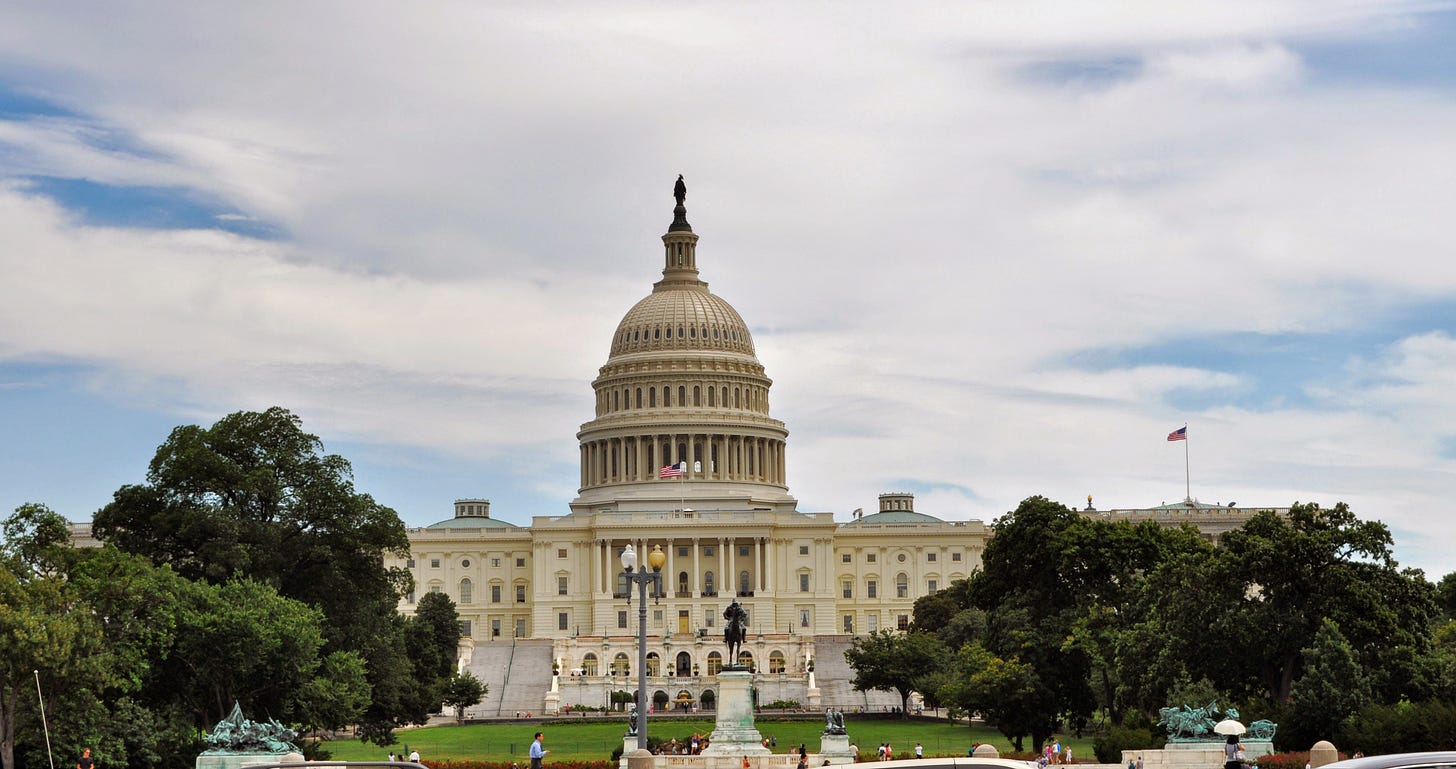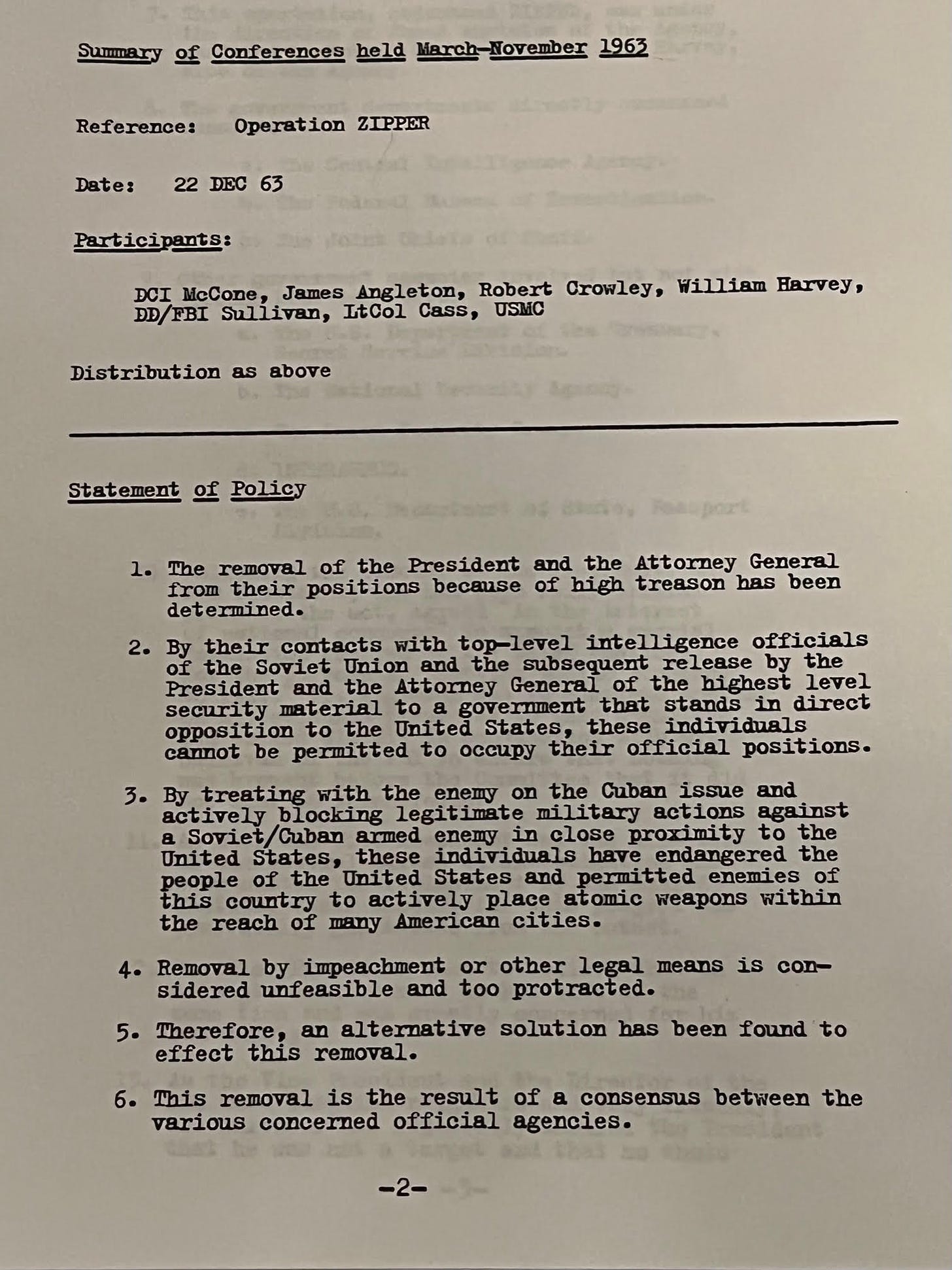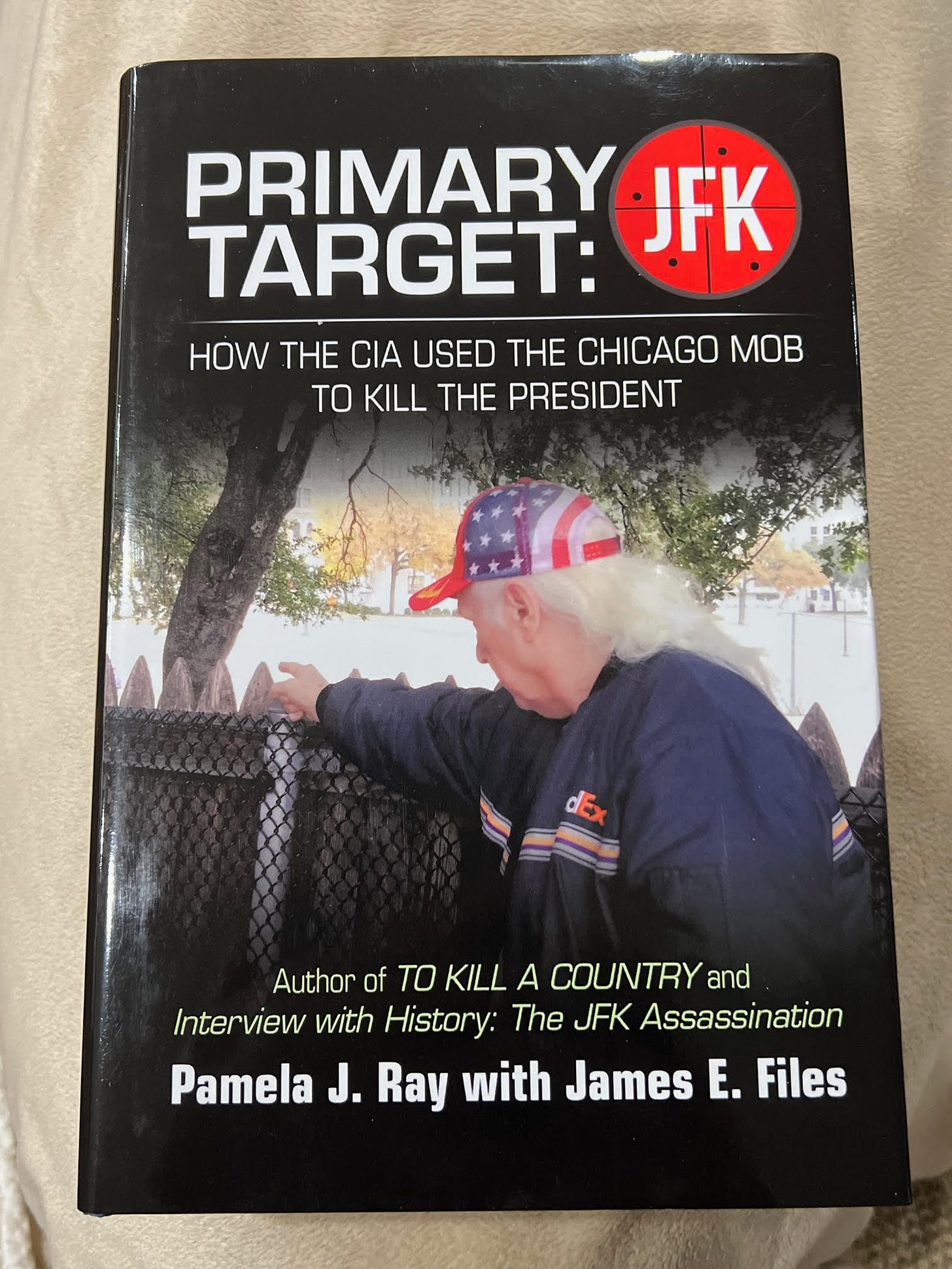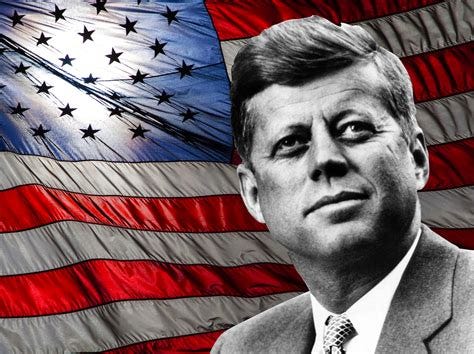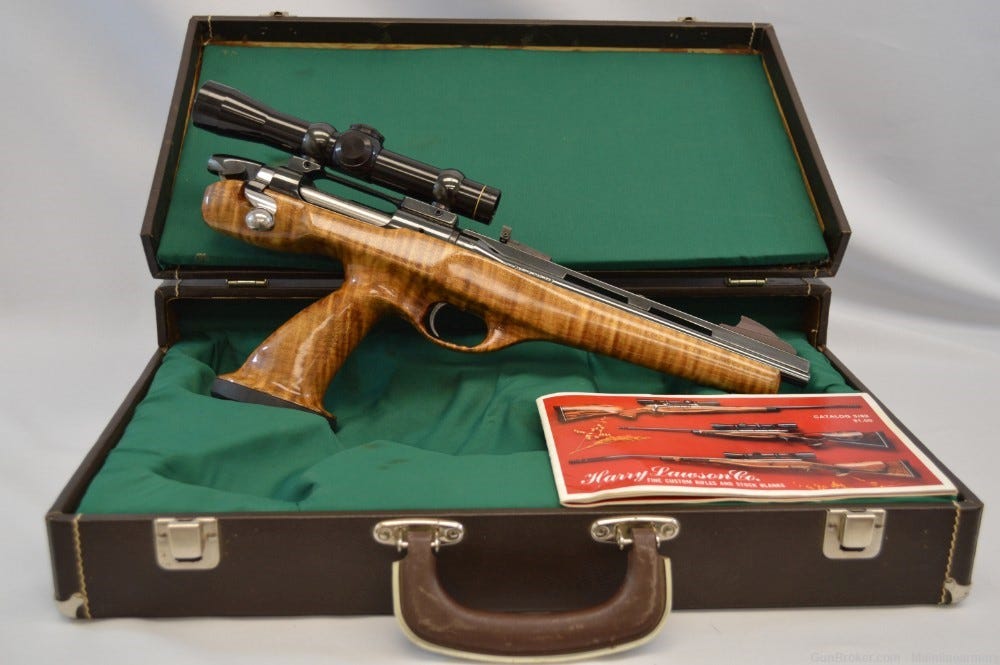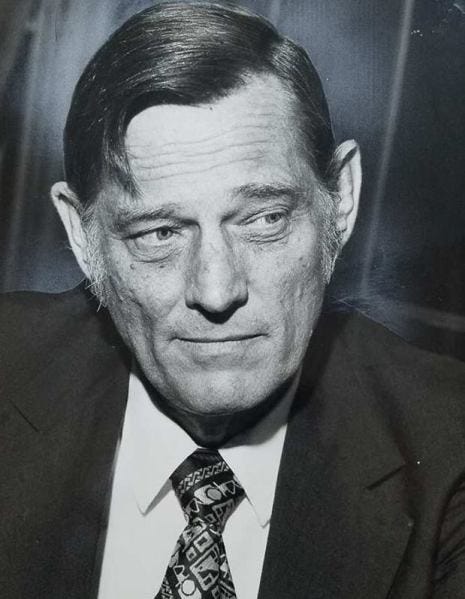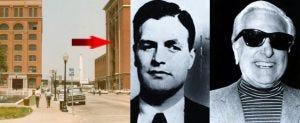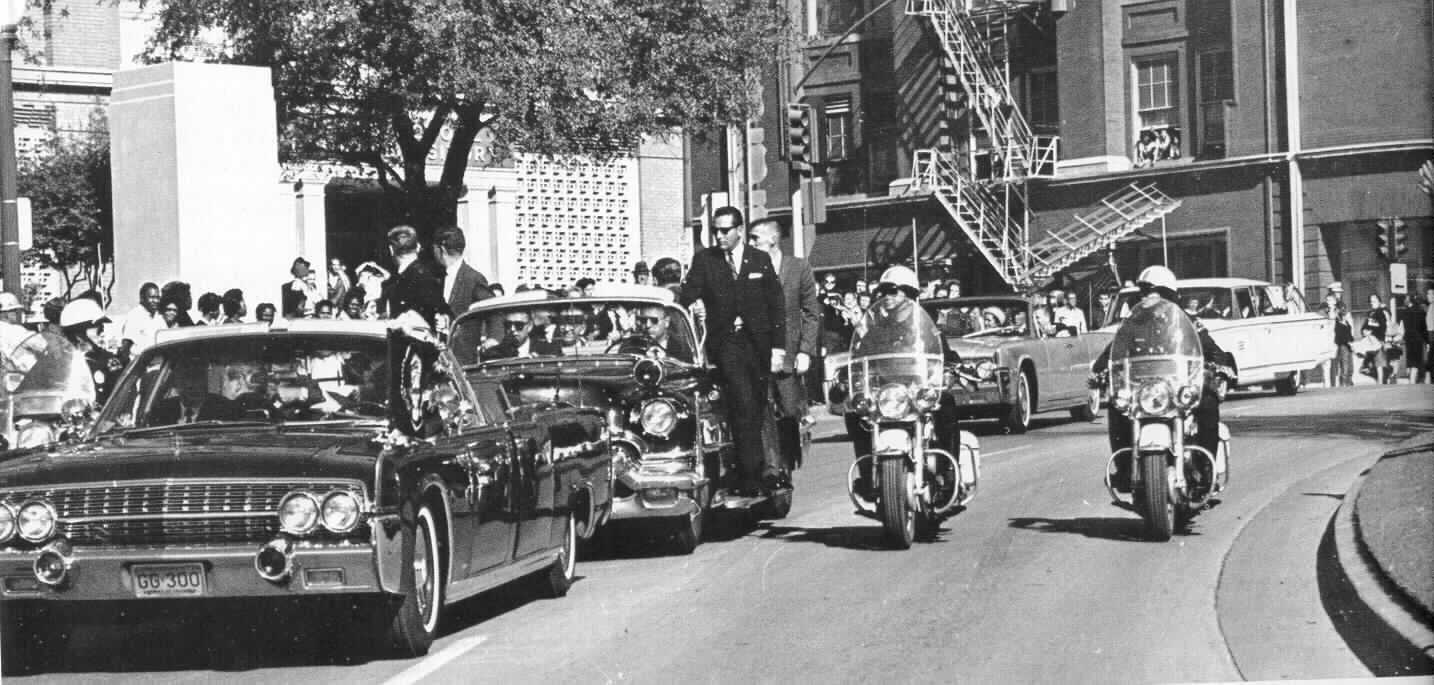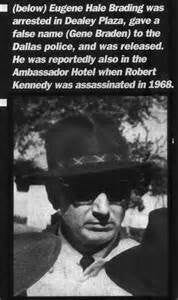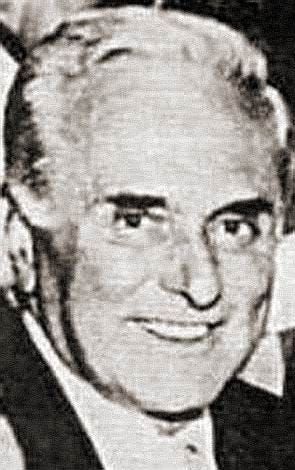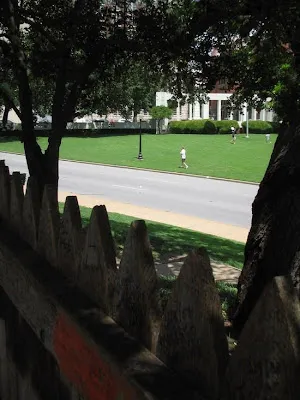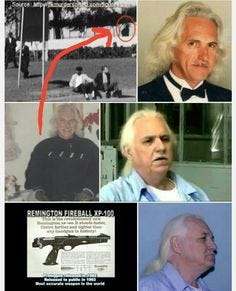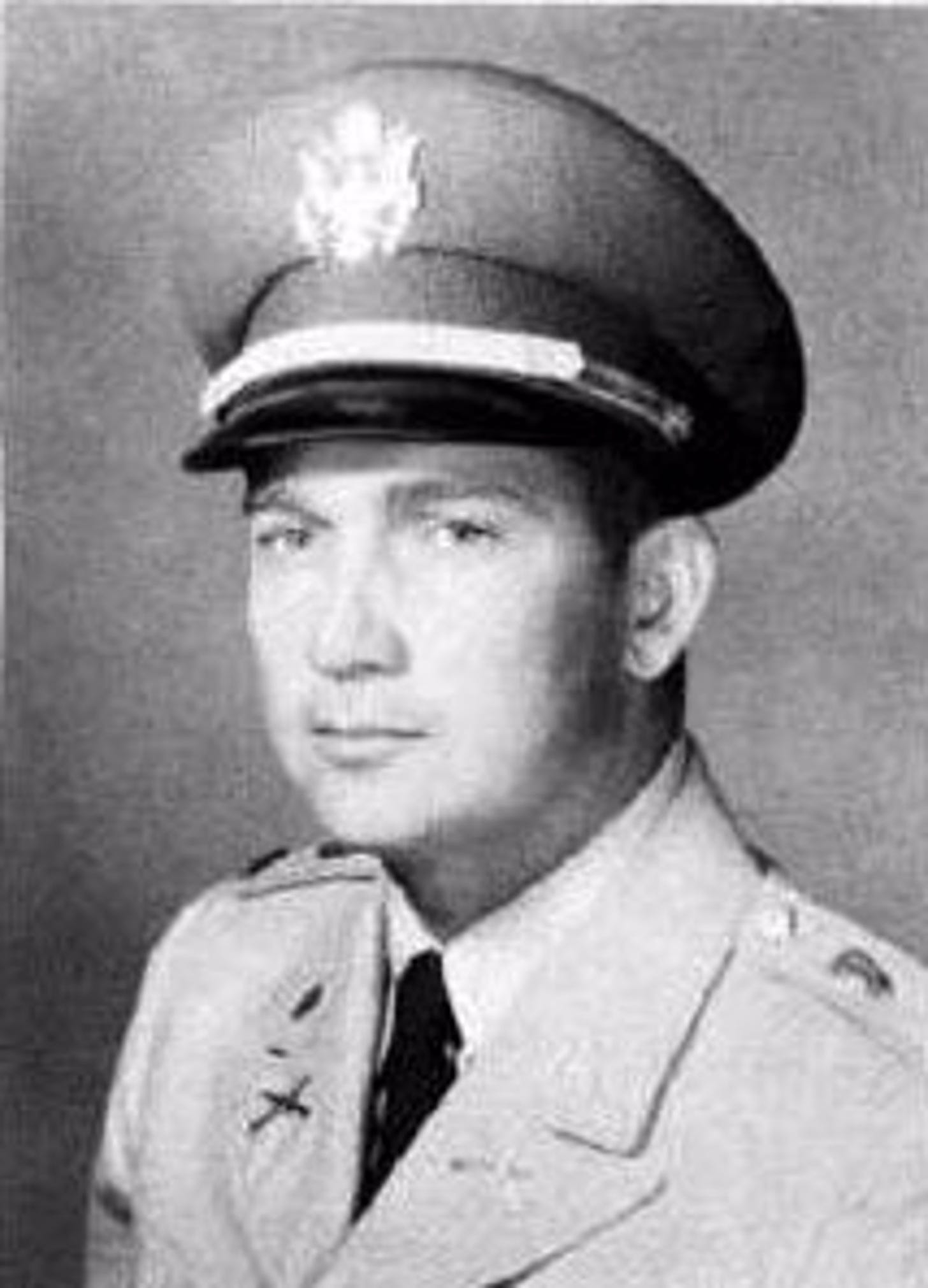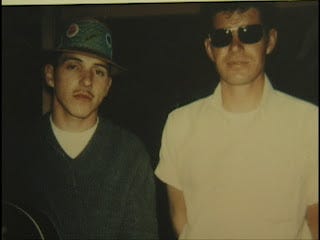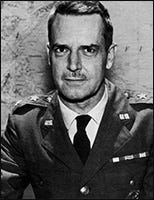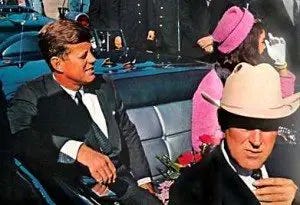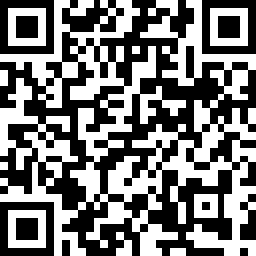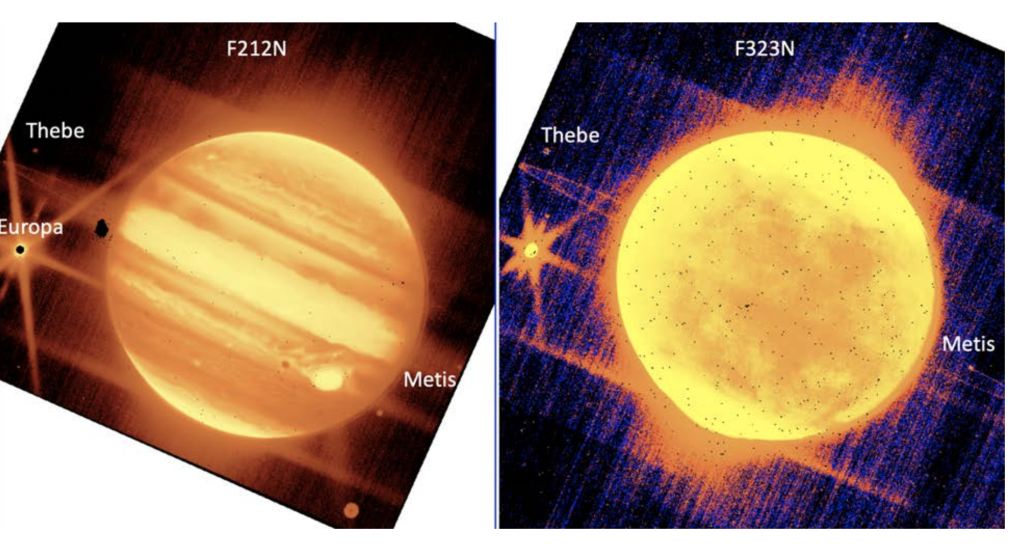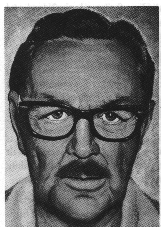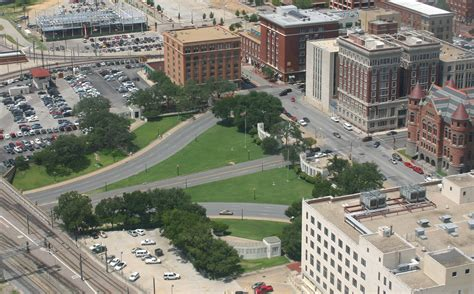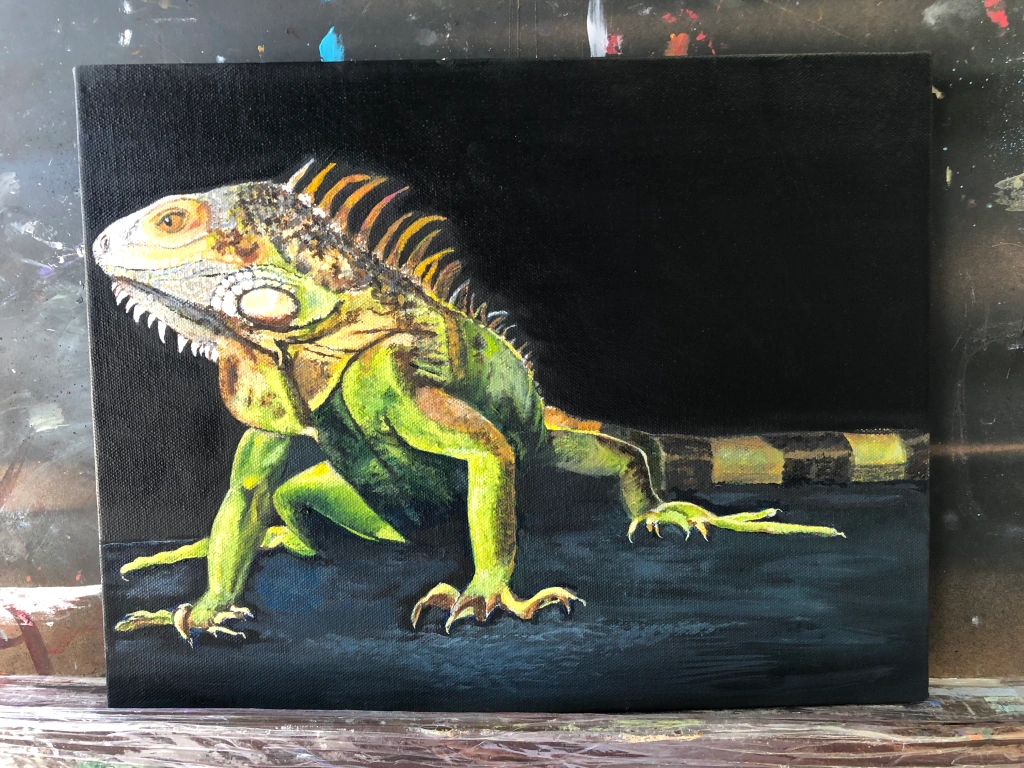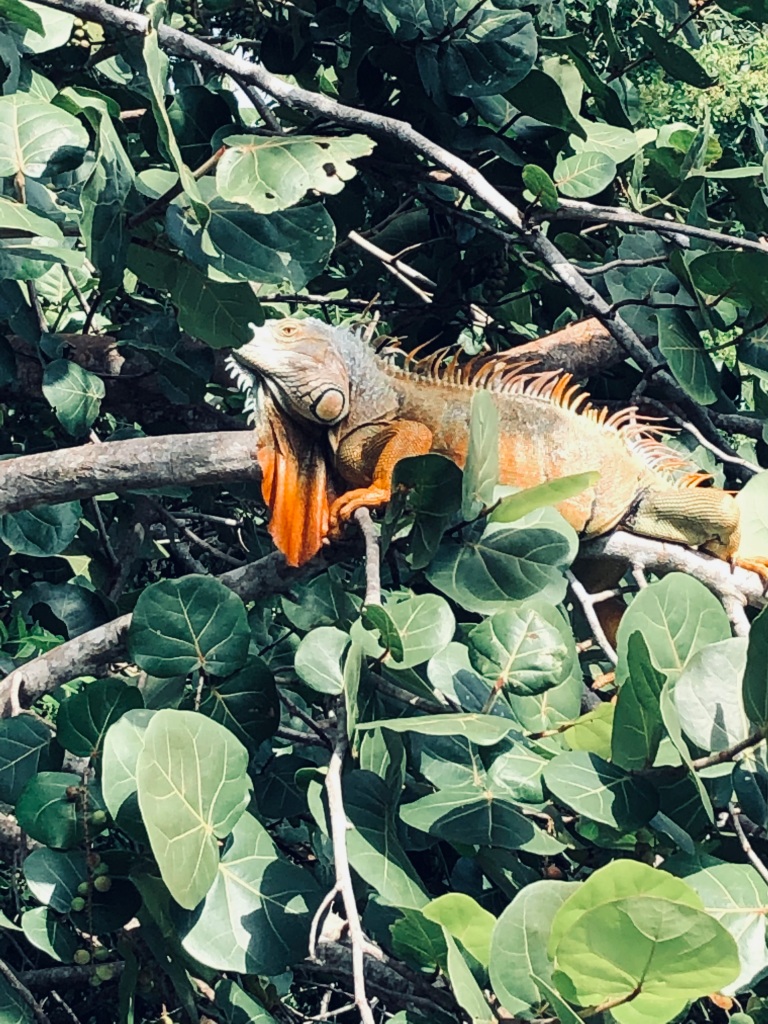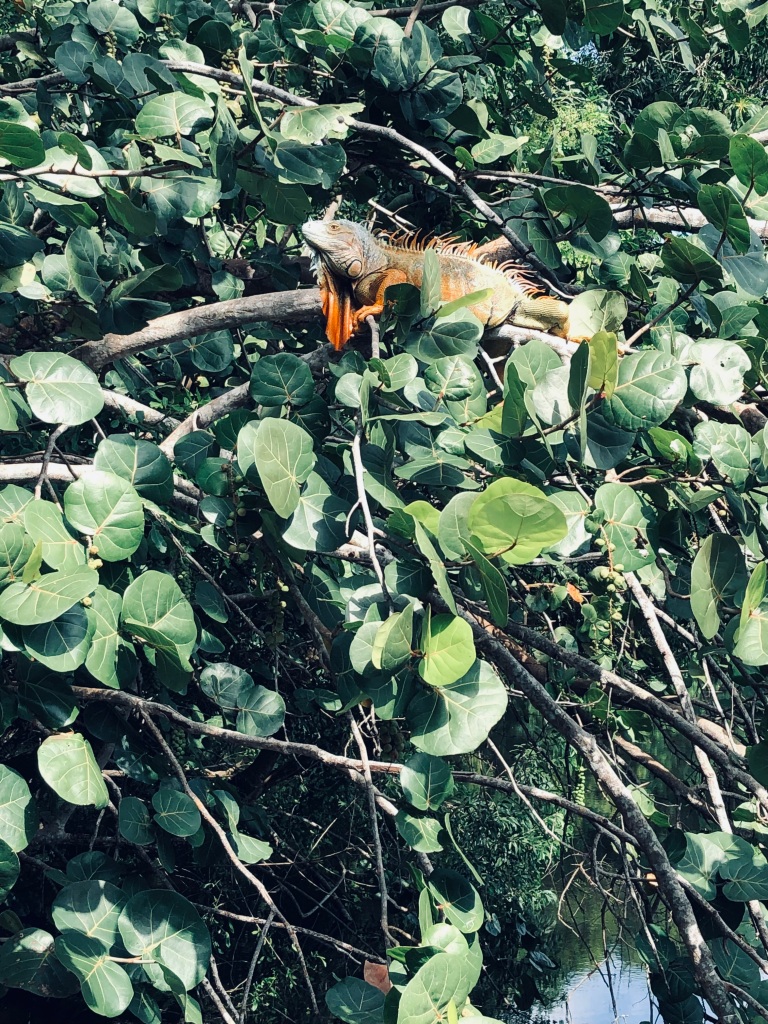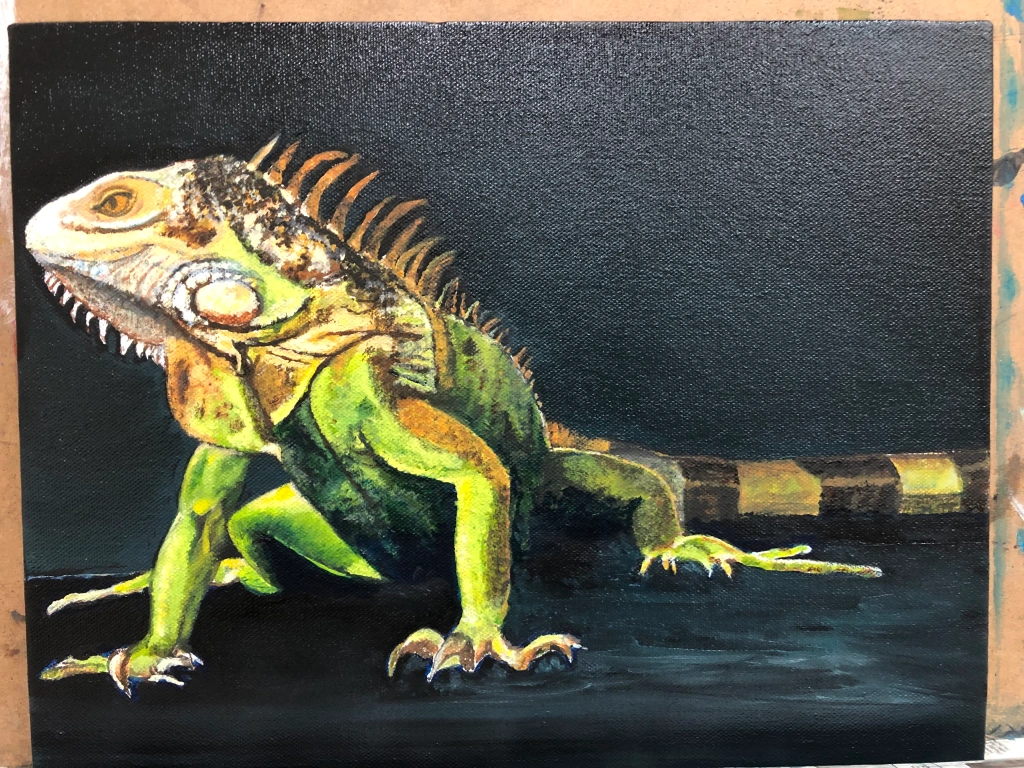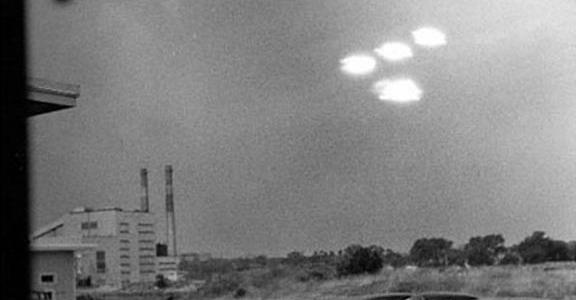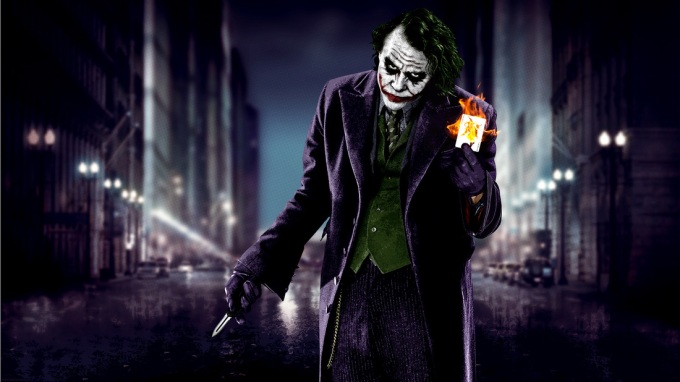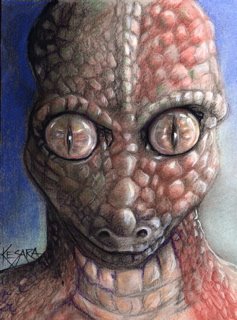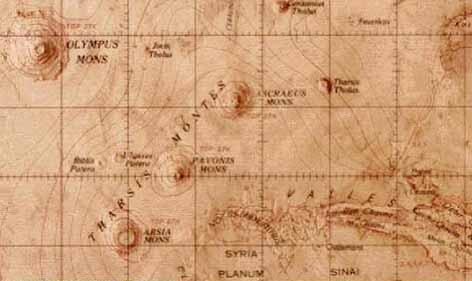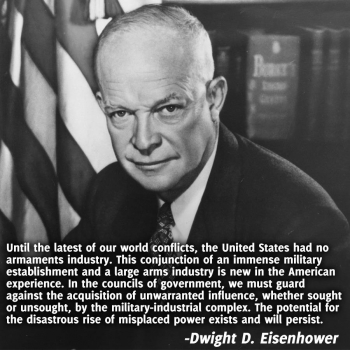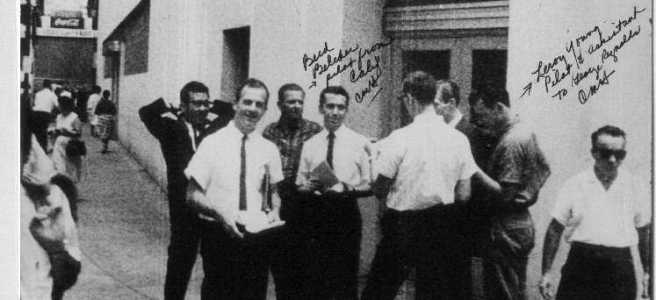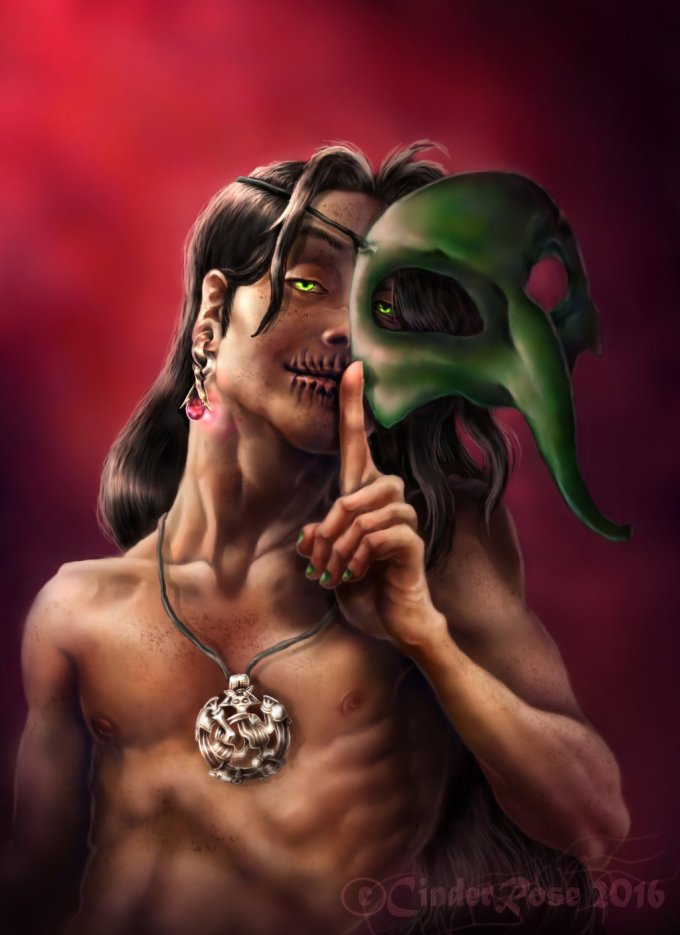US Army Observers Report: US Navy Task Force 68 – “Operation Highjump”
https://collections.nlm.nih.gov/ocr/nlm:nlmuid-14020180R-
ARMY OBSERVERS’ REPORT
OF
OPERATION
TASK FORCE 68, U.S.NAVY RESTRICTED
ARMY OBSERVERS’ REPORT
OF
OPERATION
HIGHJUMP
TASK FORCE 68, U. S. NAVY
WAR DEPARTMENT, WASHINGTON, D. C.
SEPTEMBER 1 947 Distribution :
OSW (2); WDGS Divs (5), except R&D (300); WDSS Divs (2);
AAF (10); AGF (50); T (2); Dept (2); Base Comd (2); Def
Comd (2); AAF Comd (5); Arm & Sv Bd (2); Adm Sv (2);
Tech Sv (15); AMA (2); FC (1); PG (2); Ars (2); Div Eng (2);
GH (1); RH (1); Disp (1); Sch (2), except Gen & Sp Sv Sch
(5); USMA (5); Tng C (2); Class III Instls (1); A (5); CHQ
(2); D (2); D (ATC) (2); D (A Tng Comd) (2); B (2); R (1);
AF (5); W (2); G (1); Special distribution.
For explanation of distribution formula, see TM 38-405.
ii PREFACE
This report represents the combined observations of Army personnel assigned to
Task Force 68, Operation “HIGHJUMP”, Naval Antarctic Development Project,
December 1946 to April 1947. The War Department responded willingly to a Navy
invitation to send observers on this important expedition and increased its represen-
tation to sixteen, ten more than originally allotted by the Navy. (The personnel
included four men with prior Antarctic experience.)
The Army cooperated with the Navy in respect to materiel items, particularly
in regard to Ordnance vehicles and Quartermaster items of issue including special
rations, tents, skis, stoves, sleeping bags, and cold weather clothing.
The Army observers were primarily a cross-section representing Army Air Forces,
Army Ground Forces, and some of the technical services. The combined background
permitted a general coverage of primary Army interests, particularly in the fields of
polar research, engineering, communications, personal health and protection, surface
transportation, meteorology, photography, air operations, emergency rescue, and
various fields of scientific research.
By Navy request, the Army observers’ activity was to be segregated specifically
from expedition operations. However, they asked for or accepted voluntary work
assignments which would permit better opportunities for military observations.
The Army personnel therefore had an active part in many operational activities
including exploratory flights, air operations, base construction, photography, over-
snow travel, meteorology, emergency rescue planning, training, scientific projects,
and other activities.
The Army observers were concentrated for the most part with the Central Group
which operated on the Ross Shelf Ice, as there was little of concern to the Army in
respect to ship movements and seaplane activity of the Eastern and Western Groups.
The War Department issued no special instructions to its observers, but appointed a
senior observer who was well qualified as to the broad interests of the Army in high
latitude operations and thoroughly cognizant as to Antarctic conditions. The senior
Army observer organized the observation team and clarified fields of responsibility.
The trip to Antarctica aboard the U. S. S. Mount Olympus, Flagship of the Task Force,
was spent in frequent conference to prepare for maximum utilization of observation
opportunities in the Antarctic. The plan worked smoothly while on the ice permit-
ting the observers to work independently with only occasional coordination with the
senior observer. On the return, the observers held daily conferences and prepared
iii necessary joint logs and reports by means of dictation into a wire recorder. The
specific topics for which the observers were individually qualified and responsible
were prepared separately.
Within one week upon return to the United States the Army observation reports,
in rough draft, including illustrations, were submitted to the War Department and
were made available in most instances to the agencies primarily concerned. The
publication of the combined Army observers’ report was purposely postponed until
the Navy’s much larger report could have prior release. It is felt that the Army
observers’ report, although it does not attempt to cover ship operations or problems of
primary concern to the Navy, does contain many valuable independent observations
from an Army viewpoint that do not constitute a duplication of the Navy’s “Report
of Operation Highjump”. (U. S. Navy Antarctic Development Project 1947.)
The Army’s combined observers’ report has in no manner attempted to evaluate
or criticize the Navy’s Operation Highjump. It has been a conscientious effort to
report the operation as planned and executed. Each contributor was requested
to consider the operation in the light of the problems with which the Army would be
faced, were it to undertake a similar project, and to make recommendations as to
how difficulties could be obviated.
The War Department is indebted to the Navy for including Army observers on
Operation Highjump under the commendable leadership of Rear Admiral R. E, Byrd
and Rear Admiral R. H. Cruzen. The Army observers, and those who have assisted
in production of this report, are to be commended for the very valuable contribu-
tions they have made to the War Department research and development program.
H. S. AURAND
Major General, GSG
Director of Research & Development
War Department General Staff
IV CONTENTS
Page
PREFACE Hi
CHAPTER 1. INTRODUCTION.
Section I. Planning of Operation “HIGHJUMP” 1
IE Activities of U. S. Army Observers 5
HI. Narrative Account of Operation “HIGHJUMP” 13
CHAPTER 2. ARMY INTEREST IN ANTARCTICA.
Section I. Historical Comments 15
II. Army Interest 16
CHAPTER 3. ENGINEER OPERATIONS.
Section I. Introduction 18
II. Construction Equipment 25
III. Cargo Handling and Unloading 30
IV. Buildings and Shelters 34
V. Utilities 41
VI. Airstrips and Snow Tests 44
VIE Recommendations 57
CHAPTER 4. TRANSPORTATION.
Section I. Introduction 64
II. Cargo Carrier, M29C 66
III. Tractors 70
IV. Drawn Conveyances 78
V. Landing Vehicle, Tracked (LVT) 81
VI. Observations 96
VII. Recommendations 99
VIII. Comments by U. S. M. C. Observer 101
CHAPTER 5. AIRCRAFT OPERATIONS.
Section I. R4D (C-47) Operations in the Antarctic 105
II. Technical Observations 108
III. Recommendations Ill
IV. Log of L-5 in the Antarctic 113
V. Comments on Air Operations by U. S. N. Observer 120
VI. Air Operations Logs—Central, Eastern, and Western Groups 124
CHAPTER 6. SEARCH AND RESCUE.
Section T. Task Force 68 Search and Rescue Plan 129
II. Aircraft Accidents 135
III. Search and Rescue Equipment 145
IV. Observations 154
V. Recommendations 159
VI. Plan and S. O. P. for Army Search and Rescue Unit in the Antarctic . . . 161 CHAPTER 7. MEDICAL. f°*‘
Section I. Plans, Objectives and Policies 168
II. Technical Observations 176
III. Environmental Sanitation 199
IV. Survival and Rescue 208
V. Recommendations 217
VI. List of Medical Supplies Cached at “Little America III” 220
VII. Comments on U. D. T. by U. S. N. Observer 222
CHAPTER 8. COMMUNICATIONS (SIGNAL CORPS).
Section I. U. S. S. Mount Olympus 223
II. Airstrip Control Station 229
III. Aircraft 245
IV. Emergency Base Station 247
V. Trail Party 249
VI. Clothing 251
VII. Observations 252
VIII. Recommendations 255
CHAPTER'9. COMMUNICATIONS (ACS).
Section I. Plans and Objectives 259
II. Observations ' 259
III. Recommendations 263
CHAPTER 10. PHOTOGRAPHY.
Section I. Task Force Plan 265
II. Personnel and Assignments 268
III. Equipment 273
IV. Operation of Equipment 273
V. Cold Weather Problems 280
VI. Recommendations 286
VII. Comments by U. S. N. Observer 289
CHAPTER 11. METEOROLOGY.
Section I. Meteorological Plan 290
II. Technical Observations 291
III. Weather Processes Encountered 299
IV. Recommendations 300
CHAPTER 12. ANTARCTIC PLAN FOR SCIENTIFIC EXPLORATION.
Section I. Approaches to the Antarctic 324
II. The International Scientific Plan 326
III. joint Aerial Exploratory Program 327
IV. The Antarctic Is Different 328
V. Conclusion 328
CHAPTER 13. COMBINED OBSERVERS' LOG 329 APPENDIX I. INSTRUCTIONS FOR OBSERVERS 374
II. FACILITIES ASHORE AT LITTLE AMERICA 377
III. QUARTERMASTER QUESTIONNAIRE FOR NAVY TASK
FORCE 68 379
IV. OPERATIONAL AND PLANNING DISCUSSION .... 386
V. GLACIOLOGICAL STUDY OF BAY OF WHALES AREA . 391
VI. MECHANICAL CHARACTERISTICS OF NEVE SNOW
SURFACES 394
VII. CLOTHING AND FOOTGEAR EXPERIMENTS 397
VIII. MAPS 399
Page
vii Top row: Maj, Crozier; Capt. Harrison/ Mr. Waite/ Dr. Siple/ Maj. Holcombe/ Capt. Wiener/ Lt. Col. Davis. Bottom row: T/5 Waltersdort;
T/5 Shimberg/ Lt. Col. Love/ CWO Morency/ Mr. Davis/ Sgt. London/ Lt. Col. Johns
Figure 1. Army observers assigned to U. S. Navy Task Force 68, Operation HIGHJUMP RESTRICTED
CHAPTER 1
INTRODUCTION
SECTION I. Planning of Operation "HIGHJUMP"
1. Command of Project.
The United States Navy’s “Antarctic De-
velopment Project, 1947,” identified by the
code word HIGHJUMP, was established by
the Chief of Naval Operations to be carried
out by Task Force 68 of the Atlantic Fleet.
This force, commanded by Rear Admiral
Richard H. Cruzen, was under the opera-
tional and administrative control of the
Commander in Chief, U. S. Atlantic Fleet.
Technical control was retained by the Chief
of Naval Operations and exercised through
Rear Admiral Richard E. Byrd, USN (Ret.),
who was designated as the officer in charge
of the project and during the conduct of
operations exercised technical control. Tac-
tical command at all times remained with
the Commander Task Force 68.
2. Assumptions.
a. That ice conditions would permit access
to the proposed operating areas.
b. That weather conditions encountered
would permit conduct of planned air and
surface operations.
c. That no vessels of the task force would
spend the winter in the Antarctic.
3. Objectives of Project
a. To establish a temporary base and air-
strip on the Ross Shelf Ice in the vicinity of
Tittle America, Antarctica, and conduct
systematic long range air exploration of the
Antarctic Continent therefrom, and conduct
naval operations and carry out specific proj-
ects for training naval personnel, testing
materials, and amplifying scientific knowl-
edge of the Antarctic.
b. To extend the area of exploration of the
Antarctic Continent, utilizing aircraft based
on tenders operating around the continental
perimeter.
c. To examine the limits and character of
the ice belt surrounding the Antarctic Con-
tinent and the coast line where accessible by
surface ships.
d. To carry out assigned naval and scien-
tific projects in order to—-
(1) Train personnel and test materiel in
the frigid zones.
(2) Explore the largest practicable area
of the Antarctic Continent.
(3) Determine the feasibility of establish-
ing, maintaining, and utilizing bases in the
Antarctic, and investigate possible base sites.
(4) Develop techniques for establishing,
maintaining, and utilizing bases on ice, with
particular reference to later applicability of
such techniques to operations in interior
of ice caps where conditions are comparable
to those in the Antarctic.
(5) Amplify existing stores of knowledge
of hydrographic, geographic, geological, me-
teorological, and electromagnetic propagation
conditions in the area.
(6) Supplement objectives of the 1946
NANOOK operation.
765274—48—
1 BAY OF WHALES AREA
1947
GEOGRAPHIC STUDY-BY PAUL A. SIPUE
SKETCH MAP-BY JOHN ROSCOE
ALL PHYSIOGRAPHIC FEATURES FORMED
IN ICE-NO LAND AT LITTLE A M ER IC A
Figure 2. Bay of Whales area, January 1947.
2 4. Task Force Composition.
Task Force 68 was subdivided into four
task groups with the following locations and
objectives:
a. Central Group, The Central Group was
composed of the following vessels:
1 Communications Ship (ACC), the U. S. S.
Mount Olympus (Flagship).
1 Ice breaker, “wind class” (WAG), the
U. S. C. G. C. Northwind.
1 Ice breaker (AG), the U. S. S. Burton
Island.
2 Supply ships (AKA), U. S. S. Yancey and
U. S. S. Merrick.
1 Submarine (SS), U. S. S. Sennet.
This task group was to proceed to the Bay of
Whales, land and establish a temporary base
and airstrip in the vicinity of Little America,
conduct systematic long range air explora-
tion and associated operations, carry out
various training and test projects, and sup-
port scientific investigations in the interests
of amplifying our knowledge of the Antarctic.
b. Western Group. The Western Group
was composed of the following vessels:
1 Seaplane tender (AV), the U. S. S. Curri-
tuck.
1 Tanker (AO), the U. S. S, Cacapon.
1 Destroyer (DD), the U. S. S. Henderson.
c. Eastern Group. The Eastern Group was
composed of the following vessels:
1 Seaplane tender, the U. S. S. Pine Island.
1 Tanker, the U. S. S. Canisteo.
1 Destroyer, the U. S. S. Brownson.
This task group was to proceed to the vicinity
of Peter I Island (69° S. latitude and 91° W.
longitude) and from this location begin
systematic air exploration of assigned areas
of the continent and coast line. This area
was to be covered by moving eastward along
the continental perimeter, keeping just out-
side of the ice pack.
d. Carrier Group. In addition to the above
one aircraft carrier, the U. S. S. Philippine
Sea was to ferry the R4D aircraft and one
H03S helicopter down to the limits of the
ice pack from which point the R4D aircraft
were to be flown southward over the Ross
Sea to the airstrip on the ice shelf. The
helicopter was to be carried within range of
Little America aboard the ice breaker
Northwind.
5. General Concept of Operations after
Arrival.
The primary objectives of the expedition
were: To explore and map by aerial recon-
naissance and photography as much of the
unexplored and unmapped portions of the
interior as possible and certain unknown or
improperly charted parts of the coast line;
to test cold weather air operations from ice
cap terrain with conventional wheel landing
gear by constructing and using a matted
airstrip; and to determine the feasibility of
and develop techniques for establishing,
maintaining, and utilizing air bases on ice.
To these ends the various phases of the opera-
tion were planned as follows:
a. Base Site. The ice barrier was to be
approached in the Bay of Whales area and a
thorough investigation made to locate a
feasible base site in that area. If the bay
was found closed and the area unsuitable for
landing, search was to be made along the
barrier, aided by observation from the heli-
copter carried aboard the U. S. C. G. G.
Northwind. The site selected had to satisfy
the following requirements:
(1) The top of the barrier must be
accessible from the ice, foot or bay ice.
(2) The general area had to be one in
which the ice showed minimal signs of a
tendency to break off.
(3) The terrain must present a level
straightaway 1 mile long for the airstrip.
b. Base Construction. The senior Civil En-
gineer Corps officer was to be responsible
for construction of the base and airstrip.
All construction was planned to continue
3 on a 24-hour basis. The following priorities
were given to the various phases of establish-
ing the base:
(1) Priority One. Construct an access road-
way from the ship’s side to a place of safety
on top of the barrier, set up rigging to move
cargo sleds from ship to barrier top, establish
an emergency subsistence facility on the
barrier top, and install communications for
local control of unloading and construction.
(2) Priority Two. Break a trail from the
first supply and equipment depot on the
barrier top (“place of safety” mentioned
above) to the base camp site.
(3) Priority Three. Erect a 300-man tem-
porary tent camp.
(4) Priority Four. Install air operating facil-
ities such as quonset hut for service facilities,
radio equipment, and the pierced plank
landing mat 150 by 5,000 feet with parking
area, fuel dump, and runway lights.
(5) Priority Five. Erect 35-man emergency
winter hut camp.
(6) Priority Six. Special facilities for testing
equipment under cold weather conditions.
c. Carrier Group Operations. Upon comple-
tion of the airstrip (estimated late January)
two R4D aircraft were to be called from the
carrier lying outside of the ice pack at about
70° S. latitude and 175° W. longitude.
These planes were to make the flight and
test the landing strip before the balance of
the R4D aircraft were called. The destroyer
Henderson was to act as plane guard during the
launching operation. After ferrying and
launching the aircraft, no further role was
planned for the carrier which was then to
be released for return to the Canal Zone.
The helicopter on the Philippine Sea was to
be brought in to within flying distance of the
base site aboard the U. S, C. G. C. Northwind.
d. General Air Plan. (1) After the aircraft
from the carrier had joined the central
group the planes available at the main base
would be the following:
6 R4D (C-47)—based ashore.
1 JA (G-64) on skis—based ashore.
1 H03S (commercial type) helicopter—
based ashore.
2 J2F (amphibians)—one on U.S.G.G.C.
Northwind and one on U.S.S. Burton Island.
1 HOS (R~6) helicopter—based on the
U.S.C.G.G. Northwind.
1 H03S helicopter—based on the U.S.S.
Burton Island.
2 Or (L 5) based ashore.
With this equipment systematic exploration
within the limits of practicable flight by the
specially modified R4D aircraft was to be
carried out. The range of these aircraft with
cabin tanks was estimated at 750 miles’
radius. It was intended to fly standard
sector search tracks spaced so that adjacent
plane tracks at the end of the sector would be
no more than 60 miles apart. The planes
were oxygen equipped and where possible
were to fly at 10,000 feet altitude over the
average terrain level while taking trime-
trogon photographs. All R4D’s were to be
modified to a combination ski-wheel landing
gear. The smaller aircraft were earmarked
for rescue and short range reconnaissance.
(2) The Eastern and Western Task Groups
each had available the following aircraft:
3 PBM-5 seaplanes.
1 HOS (R-6) heli-
copter
1 SOG seaplane
1 H03S helicopter.
Western—all on U.
S. S. Currituck.
Eastern—all on U.
S. S. Pine Island.
The helicopters and seaplanes were to be
used for rescue and short range recon-
naissance. The PBM aircraft were to be
used in pairs to conduct exploration of as-
signed areas. Each group was to move
gradually in a direction away from the Ross
Sea area along the continental perimeter.
They were to concentrate on areas outside
of a 750-mile circle from the Central
Group’s base. Flights were to cover the
coast line first in order to provide maximum
geographical reference for succeeding flights
4 into the interior. After photographing the
coast line, flights were to be made into the
interior up to 700 miles from the ships.
General areas covered are indicated on map,
appendix VIII.
e. Withdrawal. When the season advanced
to the more difficult weather of the Antarctic
fall, making air operations unprofitable or
impracticable (estimated late March) ships
of the Central Group were to be loaded and
cleared from the Ross Sea and the entire task
force withdrawn from the Antarctic area for
return to the United States.
f. Emergency Base. It was planned that no
personnel would remain in the Antarctic
except to continue a rescue operation. If
this became necessary the winter party of
about 35 men and officers would be chosen
insofar as possible from volunteers and would
occupy the emergency camp mentioned
above as fifth priority in the base construc-
tion plan. If possible this camp was to be
located so as to utilize the buildings left by
the U. S. Antarctic Service Expedition in
1941 (“3rd Byrd Expedition”). The com-
plement of the emergency camp was planned
to include one medical officer and one
medical enlisted man.
g. Scientific Research. As auxiliary activities
many scientific projects were to be pursued
in such fields as geology, meteorology,
terrestrial magnetism, oceanography, radar
propagation, etc. Certain of these projects
were under the direction of civilian scien-
tists from nonmilitary governmental agen-
cies.
SECTION II. Activities of U. S. Army Observers
1. Personnel.
The personnel serving as War Department
observers on Operation HIGHJUMP, to-
gether with the agencies they represented
were as follows:
Dr. Paul A. Siple, civilian, WDGS, Research
and Development (Assistant to Admiral
Byrd on technical matters).
John N. Davis, Lt. Col., Inf., Infantry
School (Airborne).
Willis S. Johns, Lt. Col., A. C., AAF Com-
munications.
R. C. Love, Lt. Col., M. C., AAF, The Air
Surgeon.
James H. Holcombe, Maj., C. E., AAF, The
Air Engineer.
Dan Crozier, Maj., M. C., Brooke Army
Medical Center.
Mr. A. H. Waite, civilian, Chief Signal Corps
and Signal Corps Engineering Laboratory.
Murray A. Wiener, Capt., A. C., AAF
Rescue Service.
Chas. H, Harrison, Capt., A. C., AAF,
Weather Service.
Mr. Robert Davis, civilian, Strategic Air
Command (radar mapping observer).
S. A. London, 1st Sgt., AAF Rescue Service
(paratrooper).
A. J. L. Morency, C. W. O., Amphibious
Engineers.
In addition to the above, four U. S. Army
enlisted photographers were on the expedi-
tion as participants under Navy direction.
They were: Cpl. J. M. Waltersdorf and
Gpl. J. Shimberg, central group; Cpl. H. G.
Foster, Western group; and Cpl. E. Zinberg,
Eastern group.
2. Policies of the Commander, Task Force
68.
The policies of the Commander Task
Force 68 with reference to the activities of the
Army observers were as follows:
a. Army observers were not to participate
5 in the operation or the projects set up for
accomplishment by the Navy Department.
Their capacity as observers only was main-
tained except as requested by the task force
staff.
b. In order that the final report on HIGH-
JUMP might be as complete and compre-
hensive as possible, it was directed that ob-
servers submit their official reports to or via
the Task Force Commander. If desired,
observers were given the choice of submitting
advance copies of their reports to interested
addressees. The Task Force Commander
was to be informed of advance copies so
distributed.
c. Commanders were directed to furnish
the Army group with all information and
assistance possible in the furtherance of their
mission.
d. Complete photographic coverage of all
aspects of the operation was planned, and
any additional photographic work desired
by Army observers was to be made available.
3. Planning of Activities.
Planning of observers’ activities was initi-
ated after departure from Balboa, C. Z.
Regular meetings of all Army personnel were
scheduled three times a week, and plans
were drawn up for coverage of all task force
projects and activities.
a. A master chart listing all major activi-
ties and subdivisions thereof was prepared in
such a way as to indicate the primary,
secondary, and minor interests of each ob-
server in the various phases of the operation.
The master chart included official Navy test
and research projects and in addition many
routine phases of the operation which it was
believed would yield valuable information.
The medical officers submitted a jointly
prepared outline of subjects to cover which
became the medical section of the Army
project list.
b. It was decided that a final consolidated
report to the War Department would be
written on the return journey from material
assembled by the various observers. Each
Army observer wrote the sections for which
he had been originally assigned and con-
sidered best qualified. These assignments
carried with them the responsibility for
detailed observation and final preparation
of material for the consolidated report.
c. It was believed preferable that most
Army observers live ashore from the earliest
possible date in close contact with the opera-
tion. Accordingly, a memorandum was sub-
mitted to the Chief of Staff, Task Force 68
requesting that this be authorized. Subse-
quently the task force commander directed
that during the early phase of unloading
supplies and building the airstrip, only per-
sonnel essential to the actual progress of the
work would be quartered on the ice. All
other personnel, both Navy and Army, were
to sleep aboard ship. During this period
the presence of these officers on the ice was
to be permitted insofar as it did not place a
burden on the shore party in erecting tent-
quarters, expanding the mess to accommo-
date them, etc. See Task Force Memoran-
dum, this subject, appendix II. Exception
to this policy in connection with the War
Department observers was made in the case
of Maj. Holcombe, Aviation Engineer ob-
server, who was invited to assist by partici-
pating in the operation in his field and was
authorized to quarter ashore at any time at
the discretion of the senior naval engineering
officer. Other Army personnel were to be
quartered ashore after the landing and con-
struction phases.
d. In view of the detailed and complete
photo coverage of all kinds planned for the
expedition it was the hope of the medical
observers that a moving picture covering
the medical support of the operation might
be assembled. The privilege of requesting
photographic coverage was extended to the
Army group and a comprehensive list of
medical subjects was submitted.
6 e. It was foreseen that many of the data
assembled by various observers would re-
quire interpretation and correlation with
the weather conditions prevailing when the
observations were made. The AAF Weather
Service observer was assigned the responsibil-
ity for obtaining and recording daily informa-
tion on temperature, wind, cloud cover, etc.
4. Activities Ashore.
Most Army observers made daily visits
ashore until 23 January when tent quarters
were made available and were occupied
from that date until the shore party was
evacuated on the U. S. C. G. C. Burton Island.
Information was gathered principally
through the medium of daily contact with
personnel of the base camp. Press confer-
ences were not attended by Army observers,
with the exception of a few instances. Each
air crew member was interrogated after all
major flights. Engineering officers, crew
chiefs, and line mechanics were also con-
tacted on matters relating to their work
activities. Permission was obtained from the
base commander and senior officer of the
flight echelon to attend aircrew briefings, and
this was done whenever possible. Major
Dan Crozier, M. C., and C. W. O. Anthony
J. L. Morency were members of the party
which made a week’s trip to the Rockefeller
Mountains in tracked vehicles.
5. Recommended Assignments of Army
Observers.
The following memorandum from Dr.
Paul A. Siple, Senior War Department
Observer, to Capt. R. S. Quackenbush,
USN, Chief of Staff, Task Force 68, outlined
the recommended assignments for the Army
observers while with the Task Force on
Operation Highjump:
18 December 1946
Aboard USS Mount Olympus
MEMORANDUM TO: Capt. R. S. Quackenbush, U. S. N., Chief of Staff,
Task Force 68, Operation “HIGHJUMP”.
FROM: Dr. Paul A. Siple; Senior War Dept. Observer, U. S.
Army.
SUBJECT: Recommended assignments of Army Observer per-
sonnel during phase I of Ice Operations (Prior to
arrival of R4D aircraft).
1. The following recommendations are summarized from detailed observa-
tion plans now under preparation to be submitted at a later date. Army
Observer personnel are sincerely interested in the success of Operation “HIGH-
JUMP” and are willing, individually or collectively, to be of such assistance
to the Task Force Commander as he might desire, insofar as they are capable,
providing, of course, that such possible assignments permit ample opportunity
to carry out observations of their specifically assigned fields by the War Depart-
ment. The following list of Army Observer Personnel is given by name, showing
individual primary interests and personal choice of location:
A. Dr. Paul A. Siple, W. D. G. S.:
(a) To be available at all times for advice as desired by the Officer
in Charge and the Commanding Officer of Task Force 68, on subjects pertaining
7 to Antarctic Geography, safety of personnel and general operations ashore,
including scientific research program.
(b) To be available to assist the Task Force Commander in selection
of suitable safe sites for various operations on the ice.
(c) To observe physical factors related to the construction of the airstrip.
(d) When not occupied with (a), (b), and (c) above, to accompany
members of the scientific group concerned with studies and surveys of the defor-
mation of the Ross Shelf Ice.
(e) To observe factors of human adaptations, acclimatization, accus-
tomization, clothing protection, climatic effects and carry out personal experi-
mentation on radical clothing designs.
(f) To take such opportunities as may be provided to carry out visual
observations from the air, to continue previous studies of the morphology of the
glaciation of Antarctica and its general geographic structure.
CHOICE OF LOCATION:
(1) As desired by Admiral Cruzen.
(2) At the airstrip camp.
(3) With the bivouac camp for scientific group, planning to study
ice deformation.
(4) Aboard ship.
B. Lt. Col. Robert C. Love, M. C.:
(a) Primary interest concerns general and specific problems of aero-
medical and general medical nature. This latter will include all phases of health,
sanitation, preventive medicine, casualties, acclimatization, clothing protection,
accustomization, psychological factors, fatigue and endurance, food and water
supply, observation of medical facilities and methods used ashore, including
evacuations, etc. In order to make these observations during phase I of the Ice
Operations, prior to the arrival of the R4D aircraft, it is desired that Col. Love
and Major Crozier, listed below, be permitted to live with the shore party, so
that they may experience the actual living conditions on a twenty-four hour basis.
To this end, they are both willing to accept physical assignments to maintain close
contact with working and construction parties who are subjects of their observa-
tions. It is assumed that if such assignments are made, they will be of such
nature as to permit adequate time to make and record observations. Of special
regard to Col. Love and Major Crozier, commuting from the ship daily will inter-
fere with their personal acclimatization and accustomization, thus making poor
observers and, as well, remove them for important hours each day from their
subjects.
(b) After the arrival of the R4D aircraft, Col. Love desires to transfer
his primary interest to subjects of aero-medical nature, while Major Crozier
will continue to have a primary interest in human and medical problems of
shore based personnel,
CHOICE OF LOCATION:
(1) At the airstrip camp.
(2) Self-provided bivouac near the airstrip camp.
(3) Aboard ship.
8 C. Lt. Col. John N. Davis, Inf.:
(a) Primary interest concerns all types of operations to be carried on
ashore, especially landing and tracked vehicles’ performance; obsenations of
Ordnance and Chemical Warfare tests, portable field communication equipment,
and general utilization of manpower and techniques for meeting problems for
operations of the Ice. He will be assisted in observations of performance of
automotive vehicles and transportation problems by C. W. O. Anthony Morency,
Ord., after Mr. Morency’s arrival on the Ross Shelf Ice.
(b) Desires permission (verbally indicated to Task Force Commander)
to make a short flight for the purpose of testing airborne troop type parachutes
in vicinity of the base airstrip. Col. Davis will be assisted and joined in actual
parachute jump by Ist/Sgt. Jack London, USAAF, ATG.
(c) Included in Col. Davis’s field of interests covering observations for
the Army Ground Forces are tests on landing force equipment, BUORD
PROJECT 1 (i) and technique and principles of dog sledging.
CHOICE OF LOCATION:
(1) At airstrip base camp.
(2) At ship
D. Lt. Col. Willis S. Johns, Air Corps:
(a) Primary field of interest is that of communications, including all
aspects generally and many specifically. Some observations will be made
jointly with Mr, Amory Waite, Signal Corps. Because of the nature of the first
phase, being primarily communications between ship and shore, Lt. Col. Johns
can probably best carry out his observations by living aboard ship, with occa-
sional trips ashore.
(b) After arrival of R4D aircraft, Lt. Col. Johns’ primary interest will
shift to communication problems and tests related to the flight operations.
(c) Of special interest are problems of task force organization and per-
sonnel handling, commands, and assignments.
(d) Observations to include general operations of aircraft, including
cold weather techniques of flight preparations, aircraft performance, communi-
cations, and navigation.
CHOICE OF LOCATION:
(1) Aboard ship.
(2) At base camp after arrival of R4D aircraft.
E. Major James H. Holcombe, Air Corps Engineer:
(a) Observe and participate in construction of airstrip and advanced
air base on Ross Shelf Ice. It has been indicated informally that Major Hol-
combe’s services as an air engineer consultant and as an officer to assist in con-
struction of the airstrip may be requested, and to this end he is willing to cooperate
to the fullest extent. This would permit him to be billeted ashore where he can
best observe while helping in his primary field of interest.
(b) Observe tests, performance, and suitability of standard construction
equipment, materials, vehicles, fuels, and lubricants.
(c) Observe cargo handling and unloading.
(d) Determine physical characteristics of possible future air base sites.
9 (e) Observe demolition operations in icefields if such prove necessary,
or are attempted for test purposes. If such procedure is contemplated. Majoi
Holcombe would appreciate being placed on the ship most likely to carry out
this work, providing that such temporary assignment would not interfere with
other observation activities listed above, in order of their importance to this
observer.
CHOICE OF LOCATION:
(1) At airstrip base camp.
(2) Self-provided bivouac near airstrip base camp.
(3) Aboard ship
F. Major Daniel Crazier, M. C.:
(a) Primary observation interests are the same as listed for Col. Love,
with the exception that primary interest concerns ice based personnel.
CHOICE OF LOCATION:
(1) At airstrip base camp.
(2) Self-provided bivouac near airstrip base camp.
(3) Aboard ship.
G. Capt. Charles H. Harrison, Air Corps:
(a) Meteorological observations, analysis, interpretation, and predic-
tions. To this end, it is understood that Capt. Harrison will work in close
coordination with the meteorological program and is willing to assume such
responsibilities as may be assigned to him in this field.
(b) To observe and record physical characteristics of the environ-
ment of Antarctic conditions which produce effects upon man, equipment, and
operations.
CHOICE OF LOCATION:
(1) Aboard ship.
(2) At the airstrip base camp.
H. Capt. Murray A. Wiener, Air Corps:
(a) To observe all aspects of search and rescue operations, including air,
sea, and ice. These observations will include problems concerning communica-
tion and aids, transportation study, to include land and ski-type aircraft, heli-
copters, small boats, over-snow vehicles and utilization of dogs and sleds;
evacuation and care of personnel and casualties, emergency equipment and use
of equipment.
(b) To offer assistance to the Task Force Commander and advice, as
requested, based upon prior experience on above-mentioned subject and experi-
ence gained on former polar expeditions.
(c) To observe and record aspects of clothing protection and general
personnel requirements for operations in Antarctica.
(d) To aid scientific group, when not occupied with higher priority
studies.
CHOICE OF LOCATION:
(1) At airstrip base camp.
(2) Self-provided bivouac near airstrip base camp.
10 (3) With bivouac camp for scientific group.
(4) Aboard ship.
I. Mr. Amory Waite, Signal Corps:
(a) To observe installation, operation, and maintenance of all radio
equipment, particularly as affected by cold weather and Antarctic environmental
conditions.
(b) To observe the same factors in regard to meteorological and photo-
graphic materials and equipment.
(c) To observe generally and specifically the technical performance of
all types of communications, electrical and electronic equipment, batteries, and
items of issue by the Signal Corps, as utilized by the Task Force.
(d) To be available as desired by the Commanding Officer of the Task
Force for advice and assistance on subjects listed above and general problems
concerning Antarctica operations as previously experienced.
(e) In the early phase of the operation, temperatures will not be suffici-
ently low to make most of the desired observations listed above. He has there-
fore offered his services to the scientific group studying the deformation of the
shelf ice. As an alternate to this suggestion, Mr. Waite has suggested he accom-
pany the ship, if approved, which will erect the automatic weather station,
possibly at Coleman Island, to cover observations of meteorological equipment
and communications.
CHOICE OF LOCATION:
(1) Bivouac camp with scientific survey party.
(2) On ship, erecting automatic weather station and resultant shore
party.
(3) At airstrip base camp.
(4) Aboard ship.
J. C. W. 0. Anthony B. Morency, Amphibious Engineers:
(a) To observe all phases automotive equipment and to assist Col.
Davis in general observations of specific interest to U. S. Army Ground Forces.
This is contingent upon his transfer from the U. S. S. Cacapon to the Mount
Olympus and the Central Group.
(b) His services based upon past Antarctic experiences are available as
may be desired by the Task Force Commander.
CHOICE OF LOCATION:
(1) At airstrip base camp.
(2) Aboard Mount Olympus.
K. 1st Sgt. S. A. London, Air Corps:
(a) To assist with observation program concerning search and rescue
listed above under Capt. Wiener.
(b) To assist the program of testing Army type paratroop equipment as
listed above under Col. Davis.
(c) Services available as so desired by Task Force Commander for search
and rescue operations as based upon specific training under the Army Air Trans-
11 port Command for this type of work, including parachuting, trail work, and dog
driving and driving of over-snow vehicles.
(d) When services not required as listed above, Sgt. London is available
to assist scientific party studying deformation of shelf ice.
CHOICE OF LOCATION:
(1) Airstrip base camp.
(2) Self-provided bivouac with scientific party.
(3) Aboard ship.
L, Pvts. J. Shimberg and J. M. Waltersdorf, Signal Corps:
(a) Assigned to Photographic staff of Task Force 68.
(b) To observe performance of photographic equipment and materials
under operating conditions.
(c) Maintain photographic record of subjects in official files of specific
interest to the Army observation program.
CHOICE OF LOG A T10N:
(1) As determined by Chief, Photographic Staff.
(2) Airstrip base camp.
(3) Aboard ship.
M. Mr. Robert L. Davis, Air Corps:
(a) It is anticipated that Mr. Davis will join the Central Group from
the U. S. S. Philippine Sea by accompanying Rear Admiral R. E. Byrd or by
P2V’s. If in the latter case, he will have specific assignment of radar member
of crew under Commander Davies. If in the former case, his interests will be
as follows:
(la) Observation and consultant on all aspects of radar and electronic
equipment.
(lb) Observation on all phases of high latitude aerial navigation,
aerial photography, mapping, and interpretation.
(lc) Observation on all phases of physical research and test performed
by the Task Force.
CHOICE OF LOG A TION:
(1) With aviation detachment at airstrip base camp.
(2) Aboard ship.
PAUL A. SIPLE
Senior War Dept. Representative
12 SECTION III. Narrative Account of Operation
<ITT' 1 ■ //*
Jnignjump
The flagship of the task force, U, S. S.
Mount Olympus, sailed from Norfolk, Virginia,
with the U. S. S. Pine Island, U. S. C. G. C.
Northwind, and U. S. S. Browson on 2 Decem-
ber 1946. The voyage of 5 days to the
Panama Canal was uneventful. Transit of
the Canal was made in the afternoon and
early evening of Saturday, December 7th
and shore leave in Balboa and Panama City
was authorized over the week end. Depar-
ture from the Canal Zone was made Decem-
ber 10th, and the equator was crossed on the
12th. The passage from latitude 40° S. to
Scott Island (near 180° W. longitude and
the Antarctic Circle) was relatively calm
considering the reputation these waters have
for extremely heavy weather. Naval foul
weather gear was issued to all hands at
about 45° S. but was used very little until the
force turned south from Scott Island. Talks
on subjects relating to living and operating
on the Antarctic continent were given to
both officers and men by personnel with
experience on previous Byrd Expeditions.
Training films on a wide variety of medical
subjects were shown in the sick bay to
medical and other interested personnel al-
most every day between the equator and the
Ross Sea.
The first whales were sighted on Christmas
day and the first iceberg the following day at
about 60° S. latitude.
The ports of departure and sailing dates of
task force vessels and necessary refueling
operations precluded all vessels’ making the
trip in their assigned groups. Some vessels
of the Eastern and Western Task Groups
went almost direct to their assigned operating
areas. Others met at Scott Island, and the
final disposition by groups as planned was
made subsequent to this rendezvous. In the
vicinity of Scott Island a refueling operation
was carried out, some personnel and equip-
ment were exchanged between vessels, and
the U. S. G. G, C. Northwind made an ice
reconnaissance to the south. A relatively
open area was found and after a day and a
half at the island the central group turned
southward on December 31st. Extremely
heavy ice pack was encountered on the
second day south of Scott Island. Many
huge bergs of barrier ice were interspersed
among large, closely adjacent floes of thick
bay ice. Virtually no progress was made for
5 days in this area—about 69° S. latitude.
When the pack was finally cleared on De-
cember 14th, 10 days more than planned for
had been expended in reaching the barrier.
The Bay of Whales was reached on the
15th and on that day and the next, small
reconnaissance parties were sent into the
bay on the ice breaker to estimate the land-
ing possibilities and locate a base site. On
the 17th unfavorable wind and ice conditions
for entering the bay prevailed. At about this
time it was thought that operations ashore
would have to be curtailed. First, due to the
width and heaviness of the ice pack—the
most extreme conditions ever reported in
this area—an early freeze-up of the Ross Sea
appeared likely. Second, the flagship and
the two cargo vessels had received varying
degrees of damage in the passage through the
ice. For these reasons a tentative departure
date of 5 February was considered. Having
arrived 10 days later than planned, and with
departure by the end of the first week in
February a possibility, there remained only
3 weeks for unloading, construction of the
base, and shore based air operations. Ac-
*For expanded daily activities, see Chapter 13 "Combined
Observers’ Log."
13 cordingly, the construction of the metal
airstrip was deleted from the plan, although
short sections were to be laid for testing pur-
poses. The R4D aircraft would then fly from
plain ice shelf surface and would all be on
skis throughout the operation.
The flagship entered the bay and tied up
to the ice on January 22nd. Camp con-
struction, including mess facilities was com-
pleted and the camp fully occupied on the
23rd of January. At this time work on the
aviation facilities was accelerated, and by
the 25th the Central Group was ready to
receive the planes from the carrier. Weather
conditions were not satisfactory at both the
Philippine Sea and the Bay of Whales until the
evening of 29 January, when the planes were
called. The first two took off shortly before
midnight and arrived at about 0500 hours on
30 January. The others arrived the same
day around noon. The ice breaker, return-
ing from its rendezvous with the Philippine
Sea, reported much improved ice conditions
in the Ross Sea. Accordingly, it was de-
cided to finish unloading the ships, leave a
200-man air party ashore, escort the ships out
through the pack, and send the ice breaker
U. S. G. G. C. Northwind and U. S. S. Burton
Island (the latter to arrive soon from the States)
back to the bay for subsequent evacuation of
the shore party. This plan had been con-
sidered previously and now appeared feasible
due to improved conditions in the ice pack.
March 1st was set as the latest date for final
evacuation of the shore party aboard the ice
breakers. The ships departed the Bay of
Whales on 6 February.
In the meantime the R4D aircraft were
modified by removal of the wheels to plain
ski (retractable) landing gear, loading plans
were modified in accordance with final oper-
ational requirements, and aircrews made
trial flights, checking out on the modified
landing gear and JATO on plain snow sur-
face. A trail party of seven men in two
LVT’s (“alligators”) was prepared to journey
southeast to approximately longitude 139°
W. and latitude 82° S. to establish a weather
observation point in support of the flights
to be made. This party was out from 12 to
19 February, reaching the Rockefeller Moun-
tains 90 miles from the base camp. At mid-
night on the 13th of February, the weather
had cleared sufficiently to permit extended
flying operations. Several days of clear
weather followed, during which time most of
the major flights were made. Up to 16
February most flights were made with JATO,
but thereafter most were made unassisted
due to improvement in the surface of the
strip. The last major flight took off late on
the 21st and returned the 22nd of Febru-
ary. Operations were discontinued with this
flight and the camp closed on 23rd of Feb-
ruary. The approximately 200 personnel
left were evacuated on the U. S. S. Burton
Island, and the majority of them were trans-
ferred to the flagship after passing through
the ice pack.
On the return journey the vessels of the
task force were routed both separately and
in small groups so that various liberty ports
were visited in Australia, New Zealand, and
South America. The flagship passed through
the Panama Canal on the 6th of April and
arrived at Washington Navy Yard on 14th
of April, completing a voyage of 22,000
miles.
14 CHAPTER 2
ARMY INTEREST IN ANTARCTICA
SECTION I. Historical Comments
Navy Task Force 68 (Operation
“NANOOK”) sailed into northern waters
in the summer of 1946. Basically this opera-
tion permitted a trial of ice breakers and
other types of vessels maneuvering in the
ice floes between Greenland and the Cana-
dian archipelago. This operation served a
useful purpose in addition to personnel
training and tests of equipment. It trans-
ported supplies and aided in the building of
a weather station at Thule, Greenland, and
other weather bases would have been con-
structed in cooperation with the U. S.
Weather Bureau, the Air Forces, and the
Canadian government had not the speed
of negotiations been so slow. At the end
of the summer’s operation (1946) in the
north, it was clear to the Navy that the task
of training and testing its equipment in
ice-filled waters would require a long,
patient period, because of the impending
darkness and treacherous ice-filled seas.
Task Force 68 (“NANOOK”) returned to
the United States in early fall 1946. The
importance of continuing the “NANOOK”
type operations was apparent to the Navy.
It would be nearly 9 months before the Task
Force could again return to the arctic
waters safely. It therefore appeared desir-
able, in the meantime, to utilize these
same ships and partially trained personnel
to carry out a similar operation in other
ice-filled areas. Antarctica, from December
to March, would fit ideally into this program
and permit this same Task Force to return
again to Arctic Seas in July 1947.
It also appeared wise to the Navy to give
its Task Force specific problems to carry out
incidental to its normal polar problems and
operations. These problems form an incen-
tive which is both interesting, and at times
sufficiently difficult to force the Task Force
into conditions which give a battle-worthy
test of equipment. Rear Admiral Richard
E. Byrd conceived of a problem, namely
exploration and scientific investigation of the
world’s least known continent, Antarctica.
Because of his long experience and leadership
in the field of Antarctic exploration, he was
logically selected as a personal representative
of Fleet Admiral Nimitz to serve as officer
in charge of the project designated as
“HIGHJUMP”. The derivation of this
name came from a whimsical change from a
previous code name “POLE VAULT”
which was somewhat too revealing at a
time when the expedition’s plans were in the
classified state ot preparation, thus implying
at the start that flights would be made over
the continent ot Antarctica, including the
South Pole itself. Task Force 68 continued
under its previously organized pattern with
Rear Admiral Richard H. Cruzen in com-
mand under the Commander in Chief of the
Atlantic Fleet. Task Force 68 was inform-
ally discussed as a possible joint Army-Navy
Task Force; however, no formal discussions
concerning the Navy’s Antarctic Operation
were held with the War Department until
after the Navy had decided to keep it strictly
a Navy enterprise. The Navy invited six
Army observers to join the expedition; how-
15 ever, they later agreed that this number of
Army personnel was too small for so large an
operation and the number was increased to a
total of 16. Army assignments included
three lieutenant colonels, two majors, two
captains, one warrant officer, five enlisted
personnel, and three civilian representatives
of the War Department. Four of the enlisted
men were Signal Corps photographers as-
signed to operational duties. Four of the
Army observers were men with previous
Antarctic experience, whose experience had
been gained on previous Byrd Expeditions.
Dr. Siple of the War Department, associate
of Admiral Byrd on all of his previous
Antarctic Expeditions, was asked for by
name to assist the expedition leaders in an
advisory capacity and was further designated
by the War Department as the Senior War
Department representative.
SECTION II. Army Interest
The following points are listed as the
principal reasons why the Army considered
that it had a basic interest in the Navy’s
Antarctic Expedition:
A. National defense requires that the
United States military forces must become
proficient and capable of carrying out war
operations in areas of high latitude, a situa-
tion in which the Army has had little or no
experience. Antarctica is an unpopulated
area with a wide diversity of conditions
which would serve as a suitable proving
ground with unlimited maneuvering areas.
Seasonal timing permits the use of Antarctica
for continuous operations when the Arctic
area is in total darkness.
B. Conditions comparable to those on other
icecaps are represented in Antarctica with
comparatively easy access to the sea. The
use of Antarctica is not complicated seriously
by questions of sovereignty prohibiting re-
search and operations.
G. There is so little known of Antarctica
that incidental scientific investigations car-
ried on by military forces are of a tremendous
value toward unveiling the potentials of a
continent largely opened up in recent years
through the efforts of private United States
citizens, even though no official claim to the
territory by the United States Government
has ever been made. There is no proof,
to date, whether there are or are not mineral
resources in the Antarctic which would be
of value to this Nation. With the exception
of the discovery of the basic mineral coal,
the continent has been so little prospected
that it is reasonable to assume from the
meager geological information gleaned that
mineral deposits in economic quantities
probably do exist there. Although the prime
responsibility of determining the potential
value of Antarctica is not necessarily a
responsibility of the Armed Forces, they
are the best equipped Government agency
to perform such investigations at a minimum
cost incidental to its program of training and
research and development.
D. The isolation of Antarctica would per-
mit greater opportunities for research and
development and testing of long range
military weapons without danger to popu-
lation or interference with the sovereignty
of other nations. It is also sufficiently
isolated to permit reasonable security of
operations, which might not be true of the
Arctic. The principles involved in such
operations could be worked out conveniently
in the Antarctic in cooperation with nations
16 most closely approaching the Antarctic con-
tinent. These nations no doubt would
welcome an international approach to the
scientific unveiling of Antarctica.
E. Although the Arctic Sea is a basin
enclosed by a ring of land masses with a
fenced-in ice pack which is subjected to
melting temperatures in the summer, the
Antarctic continent, by contrast, is roughly
circular, lying mostly within the Antarctic
Circle and surrounded by a reef of ice pack
which breaks up and flows outward in the
summer until it is subjected to melting in
warmer waters. The ice pack character-
istics are therefore not identical, but are
sufficiently similar to promote a study of
maneuvering of ships and other vehicles
through or over the surface which can con-
ceivably figure strongly in the condition
of Arctic warfare.
F. The average temperature for the Ant-
arctic region is considerably lower than for
the Arctic region, so that equipment which
will stand up under the winter conditions
of the Antarctic would generally be satis-
factory for the coldest temperatures and
conditions of the Arctic (actually the coldest
surface temperatures recorded are those in
Subarctic Siberia). The summer period in
Antarctica rarely rises above freezing, which
permits research work to be carried out at low
temperatures under continuous conditions
of daylight, thus permitting more rapid
development than would be possible under
the cold-dark conditions in the Arctic.
Antarctica does not present summer Arctic
conditions comparable to the tundra and
muskeg country; however, in Alaska and
through cooperation with Canada, wide
areas of this nature are available for military
investigation. Because of the difficult ap-
proach to the Arctic icefields, research and
development of military methods of opera-
tions in these areas are greatly inhibited.
The approach to Antarctica is much more
open in this respect despite its greater
distance from the United States.
17 CHAPTER 3
ENGINEER OPERATIONS
SECTION I. Introduction
1. General.
This chapter is an account of Operation
“Highjump” submitted by an observer from
the Office of The Air Engineer who accom-
panied the expedition. It summarizes engi-
neering operations and conditions encoun-
tered, presents problems of special interest
to the Corps of Engineers, and makes
recommendations.
a. The staff work and planning of Bureau
of Yards and Docks was directed by Com-
mander G. O. Reinhardt, U. S. N. (CEC).
They had only 3 months prior to the sailing
date to draw up all plans and specifications,
fabricate special items, organize the Seabee
detachment, and assemble materiel and per-
sonnel at the proper port of embarkation.
b. The Seabee unit was charged with all
construction work, cargo handling and un-
loading, transportation, and messing while
on the barrier ice. A 200-man temporary
tent camp (fig. 3), two Quonset huts, three
Wannigan Huts, three ski runways, and a
PSP test strip were the main items con-
structed or assembled. Snow conditions and
characteristics were studied in relationship
to its supporting power. Even though the
study of snow mechanics has hardly started,
a considerable amount was learned and one
would be safe in stating that the loose granu-
lated snow of the Antarctic can be compacted
within 1 month’s time to carry the load of a
C-47 on wheels without any wearing surface,
such as PSP, on the runway.
c. It was learned on the expedition that
there are three main groups of items or
subjects which should be given considerable
thought and study—they are housing, trans-
portation and construction equipment, and
snow compaction. If the Army is contem-
plating future operations in regions similar
to the Antarctic, further development of
these subjects is a necessity if the operations
are to be successful.
2. Staff Work and Planning
It was not until the first of September 1946
that the Staff Officer from Bureau of Yards
and Docks was able to start organizing
available data and planning for Operation
“Highjump”. About the middle of Septem-
ber the planning got underway on a large
scale and in less than 4 weeks drawings and/or
specifications were ready to leave Washing-
ton, D. C. This meant that all equipment,
other than standard items, had to be fabri-
cated and brought to the ship’s side for
loading in less than 6 weeks. The majority
of this work was performed by the Advanced
Base Depot, Construction Battalion Train-
ing Center, Port Hueneme, California. Other
items such as the c‘Go-devil” sleds were
manufactured by private concerns. Two
hundred and fifty thousand dollars was
allotted by Bureau of Yards and Docks for
all their supplies, labor, materials, pre-
fabrication, etc. The rest of their total cost,
which was approximately five times that
large, was required to come from surplus
property. At the time when the planning
commenced there were no organized con-
struction battalions available. The first of
18 U. S. NAVY DEPARTMENT
ATLANTIC FLEET
TASK FORCE 68
OPERATION HIGHJUMP
1946-1947
200 MAN TENT CAMP
ROSS SHELF ICE
RADM. RICHARD E. BYRD OINC
RADM RICHARD H.CRUZEN TASK FORCE CDR.
27 MARCH, 1947
Figure 3. Map of 200-man tent camp on Ross Shelf Ice.
19 November two officers, one warrant officer,
and approximately 175 men were ordered
to the unit at Port Hueneme, California.
Of the entire enlisted personnel only about
25 or 30 were Seabee personnel; the rest
came from general service organizations and
without construction knowledge other than
that which they would normally receive
while aboard ship. The month of November
was spent organizing the unit, training,
drawing clothing, etc.
3. Responsibilities.
The senior Civil Engineer Corps Officer
(Commander C. O. Reinhardt) was to be
responsible, subject to the military control of
the senior officer present afloat, for all con-
struction ashore and the discharge of cargo
and its transportation from ship’s side to the
base camp. Officers charged with the com-
mand and operation of facilities ashore were
to be responsible for advising Commander
Reinhardt of their requirements and were to
be available for consultation during the
erection of facilities under their jurisdiction.
He was to arrange for additional personnel
from ships present through the Senior Officer
Present afloat.
a. Commander P. D. Davis was to super-
vise all construction ashore and expedite
the erection of facilities in accordance with
the established priority. He was to be re-
sponsible for the distribution of personnel and
equipment assigned to construction and for
supervision of construction. 'He was to be
the Officer in Charge of the Construction
Battalion Detachment and was to have the
following Officers under his supervision: Lt.
V. B. Peller (CEC) U. S. N., Capt. V. D.
Boyd, U. S. M. G. (while working with con-
struction equipment and transportation),
Ens, C. B. Mallory, Chief Warrant Officer
Ulan, and any other officers who might be
attached for construction work, cargo han-
dling, or transportation within the camp area.
b. Lt. V. B. Peller was to coordinate the
unloading of cargo and its movement to a
position of safety at the foot of the barrier.
He was to be responsible for discharging
cargo at the maximum safe rate and for assur-
ing that cargo would be discharged in accord-
ance with the established priority.
c. Capt. V. D. Boyd, U. S. M. C., was to
report to Comdr. C. O. Reinhardt for ad-
ministrative direction and was to be respon-
sible for the operation of all equipment
assigned, and for the movement of supplies
and personnel from the ship’s side to the base
camp.
d. After the first stages of unloading cargo,
Ens. C. B. Mallory and 12 men were to have
the sole assignment of performing such tests
as those which would not normally be run
during construction. These men are not
included in the Seabee unit, but were to
work only for Bureau of Yards and Docks.
e. Chief Warrant Officer Ulan, who has
had considerable experience with construc-
tion equipment, was to be the heavy equip-
ment and transportation expert.
/. Other officers were to be designated to
supervise the storage of materials at the base
camp, to assist in controlling the movement
of supplies from the barrier to the base
camp, and to assist in that construction which
was deemed necessary. These officers were
to be taken from the observer group and were
to be those who were most interested in this
phase of the expedition.
4. Cargo Discharge.
Immediately upon arrival the discharge
of cargo was to have the highest priority.
All personnel not required for the security of
the Task Force were to be assigned to assist
in the discharging of cargo and later in the
construction of the base camp. All construc-
tion and cargo handling was to be on a 24-
hour basis. Personnel required for construc-
tion were to be released from discharging
20 RADM. RICHARD E. BYRD-OINC.
RADM. RICHARD H. CRUZEN TASK FORCE CDR.
27 MARCH 1947
TASK FORCE 68
OPERATION HIGHJUMP
1946-1947
EMERGENCY BASE RADIO
AND
LITTLE AMERICA III
SCALE IN FEET
U. S. NAVY DEPARTMENT
ATLANTIC FLEET
Figure 4. Emergency base radio and Little America ill.
21 5 days, including tents, rations, and fuel, was to be
unloaded and a cache established in a safe place.
b. Priority Two. Ten days’ supply of diesel
fuel and operating supplies for transportation
and construction equipment.
c. Priority Three. Communication equip-
ment for local control of unloading and con-
struction.
d. Priority Four. Materials required for the
erection of a 300-man temporary tent camp,
including 10 days’ supply of fuel for heating
and cooking, 10 days’ rations for 300 men,
and medical supplies.
e. Priority Five. Materials for construction
of air operating facilities, including pierced
plank, one Quonset hut, radio, GCA, GPM2,
15-kw generator, aviation field lights, shop
and maintenance equipment.
/, Priority Six. Five days’ supply of avia-
tion gasoline and operating supplies for air-
craft, gasoline truck, oil truck, fire fighting
equipment.
g. Priority Seven. Initial supplies of diesel
oil, aviation gasoline, rations, and other
operating supplies were to be maintained at
a constant level by daily replacement.
h. Priority Eight. Daily replacement of
shore stores of aviation gasoline, diesel fuel
oil, and other operating supplies to maintain
a safe reserve ashore.
i. Priority Nine. Material and equipment
required to erect a 35-man emergency
winter hut camp.
Note. Base radio and communication equipment
to be discharged as soon as radio hut was erected.
;. Priority Ten. Special gear submitted
for test.
k. Priority Eleven. Rations, fuel, and oper-
ating supplies for 35-man emergency hut
camp for 14 months to be discharged only
in the event that it was necessary to occupy
that camp.
/. Priority Twelve. Duplicate aviation oper-
ating supplies.
Figure 5. Bay of Whales area looking at about 135°
with camp area in background. Mess hall and
motor pool to the right of tents. Base operations
down and a little to left of tents. Beginning of PSP
test strip above the far ship. (24 Jan 47)
cargo as soon as possible. After cargo
priorities 1, 2, and 3 had been discharged
men were to be released in such numbers and
skills as to enable the construction of facilities
to keep pace with the rate of discharge of
materials. Skilled personnel other than Sea-
bees were to be released from both cargo
handling and construction as soon as possible
after facilities were available for any pro-
jected operation.
5. Cargo Discharge Priorities.
Each ship was loaded so that it could be
discharged in accordance with the established
priority for equipment and materials ashore.
All the cargo in the first six priorities was
loaded on the U. S. S. Yancey with priorities
seven through eleven on the U. S. S. Merrick.
a. Priority One. Transportation and cargo
handling materials and equipment (tractors,
fork lifts, sleds, lashing, cargo slings, tarpau-
lins, trail markers, slings, etc.).
Note. As soon as possible after the first sleds were
ashore, an emergency subsistence kit for 25 men for
22 6. Construction Priorities.
The following priorities were assigned to
construction with the assumption that the
two AKA’s and the AGC would be moored
in the Bay of Whales from early January
until all operations had been completed,
first of March, and that communications
and Flight Control would be handled by
the U. S. S. Mount Olympus.
a. Priority One. Construction of an access
roadway from the ship’s side to a place of
safety on top of the barrier, rigging to move
cargo sleds from the ship to the top of the
barrier, establishing an emergency subsistence
facility on top of the barrier, and installing
communications for local control of unload-
ing and construction.
b. Priority Two. Breaking a trail to the
base camp.
c. Priority Three. Erection of 300-man tem-
porary tent camp. The facilities actually
installed were to be sufficient to accommodate
personnel actually ashore and were to be
expanded to the ultimate 300-man camp as
it became necessary to quarter additional
personnel ashore.
d. Priority Four. Installation of air opera-
tion facilities.
(1) Quonset hut for service facilities,
(2) Radio equipment.
(3) Pierced plank landing mat 150 by
5,000 feet, with parking area, fuel dump, and
runway lights.
e. Priority Five. Erection of 35-man emer-
gency winter hut camp.
(1) Radio hut with additional insulation.
(2) Power plant.
(3) Radio antenna.
(4) Galley and mess.
(5) Quarters.
(6) Connecting structures.
(7) Additional insulation in huts.
f. Priority Six. Special facilities for testing
equipment under cold weather conditions,
g. Of the items listed above the most
difficult to be constructed was the runway.
It was planned to first construct a parking
area to determine the best method to use
during this operation. Such materials and
special designed equipment as calcium chlo-
ride, snow drags, snow rollers, oil burners
under a hood (snow melter), and dark
objects (PSP) laid on the surface, were to
be experimented with. After the most feasi-
ble method had been found, and if time and
personnel permitted, a 150 by 5,000 foot
runway was to be constructed to accommo-
date plane wheel loads of at least 60 pounds
per square inch on the tire contact area.
7. Collection of Data.
A large part of the technical and scientific
information which would normally be ob-
tained by an engineering unit should be
gathered from field experience of this unit
in the construction operation. Additional
tests which the Bureau of Yards and Docks
wished to run were as follows:
a. Field Loading Test. Purpose—To esti-
mate the plane wheel load capacity of the
‘‘pavement” which is understood to be either
compacted snow or compacted snow covered
with steel mat.
b. Snow Penetration Test. Purpose—-To de-
termine the supporting power of the com-
pacted snow.
c. Density in Place Test of Compacted Snow.
Purpose—To determine the density of com-
pacted snow at different depths.
d. Field Shearing Tests. Purpose—To de-
termine the in-place shearing resistance of
compacted snow.
e. Tests on Ice and Frozen Materials. Pur-
pose—To determine the bending, shear, and
compression characteristics of compacted
snow and/or ice.
f. Tests on Dry Chemical Fire Extinguishers.
Purpose—To determine suitability of ex-
tinguishers for use in extremely low tem-
peratures.
23 g. Test on “Little Giant Tractor Saw.” Pur-
pose—To determine ability of subject saws
to cut natural ice and snow into blocks.
8. Operations.
a. Due to the heavy ice pack the ships
were not able to get through and start un-
loading until 18 January. The two AKA’s
and the AGG departed from the Bay of
Whales on 6 February which resulted in
their being available for unloading and
assisting the expedition less than 3 weeks
instead of the previously planned 8 or 9
weeks. This necessitated the changing of
unloading priorities to meet changed con-
struction priorities which placed the con-
struction of the 150- by 5,000-foot pierced
steel plank runway last instead of immedi-
ately after the construction of the tent camp.
After inspection of Little America III, it was
decided to enlarge and improve it instead of
constructing an entirely new 35-man emer-
gency winter camp.
b. The operation plans for both loading
and discharge of cargo, and construction of
the base showed a considerable amount of
staff work and gathering of information.
They were well prepared, presented to sub-
ordinates so that they were easily followed,
and flexible enough to cope with the over-all
change in plans of the Central Group.
c. The general construction plans, even
though priorities were changed, were fol-
lowed throughout. Until such time as the
ships left, construction work and unloading
continued on a 24-hour basis, with the men
quartering and messing on the ships which
were moored in the Bay. Until 6 February
the actual working hours were from about
0700 to 1730, with an hour and a half for
the noonday meal for the day shift. The
actual working hours for the night shift were
from about 1830 to 0530 the following day
with 1hours for the midshift meal. The
evening meal on 23 January was the first to
be served in the camp and from this time on
the men working in or near the camp area
ate the midshift meal on the ice.
9. Personnel.
The Bureau of Yards and Docks was rep-
resented by an excellent team of officers
who planned and supervised their work.
The staff was headed by an officer who was
efficient and definitely gifted in that type
of work and in gathering information from
experiments which will be the basis for
Antarctic construction for years to come.
The other was especially qualified and
efficient in the details of field construction
and the handling of personnel. The effi-
ciency with which the project was carried
out reflects the cooperation between those
responsible for its planning and those charged
with its execution. Cdr. Davis was in charge
of the day shift with Lt. Col. Partridge
(U. S. M. C. observer) assisting in caching
of cargo and construction of facilities, and
Lt. Peeler and Ens. Mallory assisting in
unloading cargo and transportation. Cdr.
Reinhardt was in charge of the so-called
night shift with Major Holcombe (U. S. A.
observer) assisting in caching of cargo and
construction of facilities, and Captain Boyd,
U. S. M. G., and Chief W. O. Ulan assisting
in unloading cargo and transportation.
From time to time Capt. Wiener and other
officers helped for short periods.
a. Of the approximately 175 enlisted
men, 15 held a chief’s (master sergeant)
rating, one was in the motor pool, one
similar to the 1st sergeant, one was master-
at-arms, and the other 12 were on camp
construction. The approximate distribution
of personnel, including chiefs, was:
Overhead 3
Cooks and KP’s 24
Repairmen and operators. ... 35
Camp detail 106
24 The camp detail personnel, plus additional
personnel from the ships, did all construction
work on the tent camp, Quonset and Wanni-
gan huts, handling of cargo from the ship’s
side up the barrier, and until it was properly
cached, construction of the 35-man emer-
gency winter camp, construction of the ski
runway, and the test PSP runway.
b. When the ships departed from the Bay
of Whales on 6 February, the following en-
listed personnel were left on the ice:
Cooks and KP’s (24 hrs) 18
Repairmen and operators (24
hrs) 12
Camp detail 16
This camp detail was necessary to finish
construction of connecting tunnels, etc., at
the 35-man emergency camp and maintain
the 200-man tent camp.
c. Even though the majority of the Sea bee
personnel were unskilled in construction
work of this type, their efficiency was very
high considering climatic conditions. It is
believed this was due to their high morale
which was maintained by excellent leader-
ship and abundance of good and well pre-
pared rations, 29 percent over and above the
normal Navy ration.
SECTION II. Construction Equipment
1. Performance of Equipment.
The main items of equipment which were
used lived up to expectations even though
they are by no means the answer for Antarc-
tic work or transportation. They were D-6
Caterpillar tractors, TD-9 International fork
lift tractors, “Go-devil” sleds, QM 1-ton
sleds, Weasels (Cargo Carrier—M29G), the
wooden snow drag, and the pontoon snow
drag. The efficiency of these items depended
upon the hardness and supporting power of
the snow, which was governed by the
temperature and climatic conditions in that
the higher the temperature the softer the
snow became resulting in low efficiency,
whereas the lower the temperature the
harder the snow became, thus raising the
efficiency of track-laying vehicles. Wheeled
vehicles were out of the question and con-
sidered not satisfactory for normal Antarctic
use.
2. Conditions Encountered.
The vehicles on this operation encountered
pressure ridges, shear cracks, crevasses up to
3 feet across, slopes or grades up to 20
degrees, surfaces from those that would
support only a few pounds (2 to 4) per
square inch to sea ice several years old,
temperatures from 30° F. to — 22° F , and
winds up to 38 knots.
3. Tractor, D-6 Caterpillar.
a. This tractor (fig. 6) was modified with
the following: hardwood track extensions
which decreased its bearing pressure from
around 8 to about 5 pounds per square inch;
winterized cabs which protected the opera-
tors from low temperatures and strong winds;
canvas winterized hoods for engine protec-
tion; and track support blocks which re-
placed the support rollers. The extensions
lived up to expectations, even though they
required replacing frequently. A number
would break off at the edge of the grouser
plates. Others would split, this being caused
by the bending of the C washer which was
used in securing the extensions. The cabs
caused no noticeable trouble, but in time
765274—48——3
25 would have shown wear from vibration.
The canvas hood shrank, becoming difficult
to fasten properly. The track support blocks
functioned as expected without giving any
trouble.
b. The tractor as manufactured gave very
little trouble and only minor adjustments
were necessary. All tractors were equipped
with Hyster winches which proved very use-
ful. All the D-6’s were used for the first 2
weeks of the operation. All but three with
extensions and one with a dozer blade were
loaded back aboard ship on 5 February so
that they could be returned to the States.
The efficiency of this tractor was reduced
considerably during high temperatures (20°
to 30° F.) and soft neve. Later on when the
temperature dropped and the surface would
support more, the tractors with extensions
functioned better. The tractors without ex-
tensions operated satisfactorily on the bay
ice even though at times it was hard to obtain
a foothold; on the undisturbed snow at high
temperature, the tractor without extensions
was useless, but did manage to travel across
undisturbed snow when the temperature was
down to about —15° F. The tractor seemed
to hold its footing better while traveling in
reverse, i. e., while pulling heavy loads in a
forward gear, the rear of the tractor often
buried itself; whereas when pulling back-
ward the tendency was not so great. All
tractors either worked or idled 24 hours a
day except for a period each day when they
were being serviced. By the end of the 5-
week period on the ice, the tractor hour me-
ters averaged slightly over 500 hours.
4. Tractor, D--7 Caterpillar.
Only one of these was taken on the expedi-
tion and it was loaded back aboard after
2 weeks to return to the States. While in
the Antarctic, it was used only as an anchor
at the top of the barrier as explained in
section III. No observations were made,
but it is believed it would have performed
very similarly to the D-6 tractor.
5. Carrier, Cargo, M-29 (Weasel).
This item was used without modification
and proved very useful in that it was the
only light piece of transportation on the
ice with the exception of dog teams. It
was used mainly for communications and
to transport personnel. Occasionally small
quantities of supplies were moved when it
became necessary to expedite their move-
ment. The two main difficulties that arose
in the Antarctic that would not arise in
another theatre of operations were—
a. Track stiffness.
b. The difficulty encountered while enter-
ing, operating, or leaving the vehicle.
After the vehicle had stood for some time
it was difficult to start it moving smoothly
Figure 6. Winterized D-6 caterpillar tractor.
26 even though the engine had been idling.
It seemed as though a heavy load was tied
on behind and the engine was lacking
power. After the vehicle had been traveling
for some time it operated much more
efficiently. It is believed this was caused by
the rubber tracks becoming cold and stiff
while standing and then loosening up as they
were used. While in the Antarctic one is
required to wear considerable clothing in
order to remain comfortable. This makes it
difficult to climb in and out of the amphib-
ious Weasel and extremely difficult to
operate with the close quarters around the
steering brake levers, clutch, and accelerator.
6. Forklift (Hughes-Keeman Model TD-
9-T5C).
Modifications for the two International
tractor forklifts were the same as for the D-6
tractors: hardwood track extensions, winter-
ized cabs, winterized engine hood, and track
support blocks. The modifications acted
the same as those for the D-6 tractor. The
main operational difficulty was met as the
machine tried to turn or back around while
moving cargo from the sleds to the cache,
Figure 8. Track extension on D-7 caterpillar tractor,
Figure 9. Wooden snow drag
Figure 7. Escape hatch in winterized cab, D-7
caterpillar tractor.
Figure 10. Package shot (disassembled) wooden snow
drag.
27 which would be only a few feet. The track
under the driving sprockets would often be-
come buried, requiring help to get out. The
operator had to be extremely careful to
avoid disturbing the snow surface. Cargo
handling equipment is extremely valuable
in regions similar to those encountered.
7. Go-Devil Sleds.
This is a specially modified item of which
20 were manufactured by the Michler Sleigh
and Wagon Company, for Operation “High-
jump”. It was the main cargo sled and was
used throughout the stay on the ice, (See
sec. III.) Even though it proved satisfac-
tory, more changes can be made in its design.
The over-all structure seems to be a little
heavy for its pay load. The runner contact
area is small, causing the sleds, when loaded,
to sink with snow piling up in front of the
entire sled. The undercarriage is not de-
signed to keep the sled from becoming buried
in soft snow as is the toboggan undercarriage
of the QM l-ton sled. The side board re-
cesses which were above the floor level of
the sled made it difficult to secure large and
awkward-shaped cargo and boxes.
8. QM 1-Ton Sled.
This sled was very satisfactory and when
used in the manner for which it was designed
gave little or no trouble. It is believed that
a large runner contact area would help in
Antarctic use.
9. Snow Drags.
Two types of drags were tested; the
wooden snow drag, and the pontoon snow
drag. The purpose of the wooden drag was
to level the sastrugi, which it did very satis-
factorily, even though a lighter drag could
have been used to better advantage on soft,
undisturbed, snow. As the snow became
compacted it is possible that an even heavier
one could have been used. The pontoon
Figure 11. Steel snow drag (not used)
Figure 12. Package shot (disassembled) steel snow
drag.
Figure 1 3. Package shot (disassembled) pontoon snow
drag.
28 drag was used to iron out the snow and leave
a smooth finish which definitely expedited
the construction of the three ski runways.
The results with the pontoon drag are very
similar to those with a steel wheeled roller
on earth in that the top inch or two is well
compacted with a “burnish” finish, leaving
the snow farther down relatively undisturbed.
10. Grader, MTZ, with 12-Foot Mold Board
(Adams).
This machine was not unloaded because
it was believed it could not have been towed
to the camp site. If runways are to be con-
structed in areas similar to Antarctica some
type of grading machine will be essential.
11. Snow Surface Heater.
This heater was unloaded, but due to cir-
cumstances beyond control, was not tested.
12. Other Items.
a. The “Cle-track tractor” as used by the
Air Corps to tow planes was taken on the
expedition, but proved unsatisfactory due to
Figure 15. Snow surface heater with extra burners.
Figure 14. Compressor mounted (D-6 caterpillar
tractor) For snow surface heater (40 cfm at 25 lb./
sq. in).
Figure 16. Unloading cargo from ship direct onto
“Go-devil” sled
29 the rubber tracks which caused the same
trouble as did the rubber tracks on the
“Weasel”, plus the fact that they would not
support the hard wooden track extensions.
b. Wheeled vehicles such as truck 2b-,
and 4-ton were unloaded, but are definitely
not suited to the snow surface which will sup-
port only a few pounds per square inch. All
except a couple of Jeeps were reloaded
aboard ships and returned to the States.
SECTION III. Cargo Handling and Unloading
1. Equipment.
a. Standard stevedore equipment was used
to discharge the cargo from the ships onto the
bay ice which floated about 18 inches to 2
feet above the water. This operation was
carried on by the ships’ personnel and with
priorities as requested by Commander Rein-
hardt from day to day or whenever it became
necessary.
b. The “Go-devil” sled was used almost
throughout for transporting supplies and
equipment to the base camp. As D-6 trac-
tors would return to within a hundred feet
of the ship’s side with two or three sleds, a
towline from the ship would pull a sled
alongside, this being practiced so as to
eliminate any danger of excess weight crack-
ing the bay ice. The cargo was loaded
direct from the ships onto the sleds and a
tractor would tow them one at a time about
1 mile to the foot of the barrier. The sleds
were then hooked to a towline’ and pulled
up the barrier slope by a tractor hauling on
a cable, the cable running through snatch
blocks at the top of the barrier. The D-7
tractor with blade was used as an anchor.
From this point the sleds were pulled to the
proper cache by D-6 tractor with track
extensions.
2. Bridges.
a. It was necessary to build two bridges
between the ships and the barrier. One
crossed a pressure ridge while the other
crossed a sheer crack in which the two sides
were moving in opposite directions at a rate
of slightly over 4 feet per day.
b. These two bridges were more or less
of a standard type, the same as would span
any deep crack in soft dirt. The bridges,
being one vehicle wide, were constructed
by placing 8- by 8-inch sills in one case and
40-foot piling in another, across the ridge
or crack. They were then tied together with
Figure 17. Unloading lumber from ship directly onto
“Go-devil” sled (lumber to be used to construct
bridge across cracks in bay ice). Note tractor
staying away from ship's side in order to pevent
danger of cracking edges of ice.
30 cable with approximately 1-foot spaces be-
tween each sill. Three-inch flooring was
well spiked, with treadways of 1-inch dun-
nage going on top. PSP was placed on one
of the bridges but soon became bent, which
necessitated its removal. These bridges
served their purpose and lasted until the ships
departed from the Bay. Later on, about
the last of February, when the time came to
evacuate the camp, the bridge which
crossed the sheer crack required replacing.
During the time of our stay another crack
developed about two-thirds up the barrier
slope, but did not cause any great difficulty.
Only one footbridge and one weasel bridge
were necessary,
3. Caches.
The three main caches were:
a. Near base operations which included all
aircraft parts, equipment, fuel, etc.
b. Near the mess hall and motor pool
which included all Seabee supplies, equip-
ment and fuel, housekeeping equipment,
rations, etc.
c. At Little America III which included
rations, fuel, some construction material and
those other supplies which were to complete
the 35-man emergency camp.
4. Cargo Segregation.
Due to the large amount of cargo which
arrived at the port late and was loaded
aboard the ships during the last few days
before leaving the States, all cargo was not
stowed as set up in the Naval Operation
Plan No. 2-46, which resulted in the segre-
gation of supplies on the ice, causing some-
what of a problem. This problem was
Figure 18. Tamping snow on a bridge with a tractor.
Figure 19. Bridge crossing crack in bay ice (PSP was
put on top of one of the two bridges as wearing
surface).
Figure 20. Tractor without
track extensions towing
“Go-devil” sled loaded
with supplies across bridge
on bay ice. Note bend-
ing of PSP.
31 Figure 21. Damaged PSP on bridge which crossed
crack in bay ice was later removed.
Figure 24. Removing supplies from cache which had
been covered during a blizzard.
Figure 22. Footbridge and weasel bridge crossing
crevasse which developed two-thirds of the way up
barrier slope.
Figure 25. Aviation gasoline tank on skis was used to
refuel R4D’s (D-47’s).
aggravated because of improper or incon-
spicuous markings and the change in plans
which required the ships to leave the Bay of
Whales earlier than originally planned. A
considerable number of man-hours was spent
restacking boxes and looking through dumps
Figure 23. Snowdrifts at aviation gasoline dump after a
blizzard.
32 Figure <26. Bay of Whales Area looking at about 315°. Mess hall and motor pool to left of tents,- base
operations beyond and to right of tents. Roadway leading from tent area to the left leads to Little America
ill (35-man winter emergency camp).
for missing items. Occasionally a sled would
arrive with some of its cargo going to each
of the three dumps, resulting in “tying up”
sleds which were required to transport more
supplies,
a. All fuel, 100-octane gasoline, 72-octane
unleaded gasoline, aviation oil, motor oil,
Diesel fuel, and kerosene were shipped in
55-gallon drums, which were clearly marked.
The aviation fuel and oil was cached half-
way between base operations and the tent
camp in piles of about 100 drums each with
765274—48—4
33 the piles being about 100 feet on center.
The other main fuel cache, which was south-
west of the tent camp and near the motor
pool, was stored in the same manner.
b. The smaller planes, OY (L-5) and JA
(Norseman), taxied in between the piles for
refueling. The gas for the R4D’s (C-47)
was pumped from the drums into a tank sled
and pulled by a D-6 tractor to the planes for
refueling.
c. All fuels were standard, the same as
would be used on any cold weather operation
within the continental United States, except
the Diesel fuel which had a —40° F. pour
point. Specifications USA 2-102, C AM 3,
NGS X-4205.
SECTION IV. Buildings and Shelters
1. Temporary Tent Camp.
The first construction to take place on the
barrier was the erection of a 200-man
temporary tent camp (figs. 27, 28, and 29).
Fifty pyramidal tents were erected to house
personnel, four officers or five men per tent,
and were arranged in five rows, tents being
approximately 40 feet on center and the
rows 200 feet apart with the kitchen and
mess hall being about 300 feet,on the exten-
sion of the first row. Eleven other tents were
erected around camp mostly at base opera-
tions and were of the same type construction.
a. At the time the tent camp was being
erected the temperature was only slightly
below freezing and the surface would hardly
support the weight of a man on foot. Quite
often an individual would sink down to his
ankles, and if he stepped into an already
disturbed area he would often go in up to
his knees. For this reason, care was taken
not to disturb that area which the tent
would occupy.
h. Eighteen pieces of 2- by 6-inch lumber
12 feet long came bundled together so that
one bundle would furnish the sills for one
tent. The 2- by 6-inch pieces were scabbed
together and placed flat on the snow so that
there were nine 24-foot members lying ap-
proximately 2 feet on center. After the first
few tents this was changed to five sills
lying 4 feet on center which were scabbed
together with the remaining 2- by 6-inch
pieces instead of 1-inch lumber.
c. All floors had been prefabricated into
4- by 8-foot sections and bound together so
that one bundle made a complete floor.
Figure 27, Tent camp area looking at about 315°.
Latrines are between tent rows,- GPN lower right.
Mess hall area to left of first row of tents; above
mess hall area is Seabee cache area. Just beyond
tents is aviation gas dump. In upper right corner
of picture is base operations area and aviation
supply cache.
34 Figure 28. Tent camp area looking east. Motor pool, gasoline, and Diesel dump in foreground.
The bundles for the 17- by 20-foot wall tents
were the only ones that varied in number of
floor sections in that they contained ten
instead of the standard eight. These floor
sections were placed so that the joists sup-
porting the plywood flooring ran perpen-
dicular to the sills and were 2 feet on center.
Each section of flooring contained a loose
2- by 4-inch piece, 8 feet long which was
nailed on to the joist so that it extended out
4 feet beyond the floor’s edge for outriggers,
furnishing an anchor for the tent ropes.
The tent was erected in the normal fashion
with a tent stove being installed and ready
for use. As is normal in any tent camp,
inside frames, plywood doors of various
types, etc., were added by the occupants.
Some went further and put in ceilings and
inside walls; anything to help as insulation
and to make home more comfortable.
d. The tent camp was adequate in this
case and would be for any other operation of
this kind, provided it is to be only for a very
short period and will not encounter tempera-
tures lower than from 0° F. to —10° F.
2. Kitchen and Mess Hall.
a. The kitchen and mess hall (fig. 32) were
made up of three 17- by 20-foot wall tents,
one pyramidal tent, and one 16- by 50-foot
35 hospital tent all tied together. They were
constructed in the same manner as were the
living quarters with the exception that inside
framework and doors were constructed by
Seabee personnel.
b. As one entered the pyramidal tent he
picked up his metal tray and silverware,
passed through the chow line at the far end
of the tent where the field ranges were
arranged in a line perpendicular to the line
Figure 29. Officers’ row. Note snowdrifts which hove blown in between each tent/ note also that each tent
has a different type entrance which was built by occupants.
Figure 30. Floor panel bundles (one bundle was
required per pyramidal tent).
Figure 31. Assembling pyramidal tent floors. Note
piles in background. Each is the required material
for one pyramidal tent.
36 Figure 32. Erecting mess hall and kitchen tents
Figure 33. Detail refueling tent camp. Average
pyramidal tent used 8.3 gallons per day.
OPERATION HIGHJUMP 1946-1947
ADVANCE BASE CAMP ROSS SHELF ICE
GALLEY AND MESS HALL
Figure 34. Advance base camp, Ross Shelf Ice: galley and mess hall.
of entry, and on to the mess hall (men to the
hospital tent on right, officers to the wall
tent on the left). The actual kitchen reached
from the back of the pyramidal tent (chow
line) to the end of the first wall tent. The
second wall tent, still farther back, sheltered
a store or break-out room. About one-
third of the officers’ wall tent was used as a
37 range storage and repair room. The mess
gear washing was done at the far end of the
hospital tent. This construction and ar-
rangement worked very satisfactorily.
3. Headquarters Building.
There was really no headquarters building
for the base camp. The Seabees used a tool
tent at first and later moved their tools, etc.,
to the motor pool tent. The standard
Quonset hut (fig. 41) at base operations,
which was erected with a little more diffi-
culty than were the tents, carried on more
administrative work in one of its corners than
did the rest of the whole camp.
4. Quonset Huts.
a. The huts were also erected while tem-
peratures were slightly less than freezing,
which caused quite a problem in leveling and
squaring the floor frame. In order to aid in
this operation, 1-inch dunnage was first laid
on about 2-foot centers and perpendicular to
the 2- by 10-inch and 4- by 4-inch sills which
went on top. After the floor frame (fig. 42)
Figure 35. Mess hall and kitchen.
Figure 36. Garbage pit in snow which was at far end
of mess hall. All kitchen waste was dumped in this
hole, which grew deeper as it was used.
Figure 37. Digging hole for frozen food storage.
Note snow being sawed into blocks for easier
handling.
38 Figure 38. Framework for frozen food storage house
Figure 39. Storing food in frozen food storage house.
Figure 40. Tarpaulin being pulled over framework of
frozen food storage house. It was weighted down by
putting dunnage and snow blocks on top
Figure 41, Quonset hut floor at base operations just
after a blizzard.
had been assembled, it was trued by the use
of an engineer’s chain and level, which took
about four times as long as it would have
under normal conditions. The other major
difficulty in the erection was that the small
nuts, bolts, and plates required bare hands
to put into place. With the exception of
these two difficulties, the latter hardly being
an exception, the work progressed the same
as it would have during any operation with
the same temperature and wind conditions.
The only difference between this hut and
the standard Quonset hut is that there were
two %-inch plywood floors which were sep-
arated by 1-inch dunnage furring. Shortly
after the hut had been completed a bliz-
zard arose causing snow to blow in at the
joint between the bulkhead and the cor-
rugated sheet metal, leaving the snow lodged
between the inner masonite wall and the
outer corrugated sheets. Later heat from
the inside of the building melted the snow
causing the masonite to become wet and fall
out of place. This incident could hardly be
called a fault in the building design but
should be credited to faulty construction.
39 Figure 42. Floor frame assembly for Quonset hut.
Note near left corner metal sills are resting on 4-
by 4-inch members, which are resting on 2- by
10-inch pieces, which are resting on and perpendicu-
lar to floating dunnage foundation.
Figure 43. Quonset hut at base operations under con-
struction. Note inside wall of Quonset hut at
far end, outside corrugated sheets on left end and
insulation which goes between the two surfaces
being applied in the middle of the building.
b. A double hut 20 by 96 feet was erected
at Little America III in very much the same
fashion and encountering the same difficul-
ties. This hut enlarged the old base so as to
make it adequate if it became necessary to
leave a party through the winter night. It
had the following additions over and above a
standard Quonset:
(1) Double bulkheads approximately 4
feet apart.
(2) Double “Kima!” insulation between
inner and outer walls.
(3) Double floors, 3 inches apart, and so
constructed that air circulated between them.
(4) Waterproof paper and %-inch Celotex
which was inside and separated from the
metal outside wall by a dead air space.
Once erected, it is suitable for Antarctic and
Arctic use, but the difficulty encountered in
constructing it warrants a different design.
5. Wannigan Huts.
Three prefabricated Wannigan huts having
about 6-inch walls and inside dimensions of
approximately 7 by 14 by 7 feet high with a
door at one end, were taken on the expedition
Figure 44, Looking southwest. Excavation for con-
necting tunnel leading from double Quonset hut in
background to Little America III, which is beneath
the photographer who took the picture.
40 Figure 45. Southwest end of double Quonset hut at
Little America III (35-man winter camp) showing es-
cape hatch, short connecting tunnel, and generator
house on right end.
Figure 46. Inside of Quonset hut at Little America
III. Note gap in floor on right side so that warm air
can circulate to the left and come up through cracks
in center of floor (cracks not visible).
to be used as sled houses to transport men to
and from the airstrip so they might have a
place to warm themselves while drinking
their midshift coffee. Instead, the six sec-
tions—two ends, two sides, one sled bottom,
and a top—were bolted together without
much difficulty and used as quarters for the
three ranking officers. This type of structure
is suitable for Antarctic and Arctic use.
6. Construction Time Required.
The construction of the 200-man tent
camp required approximately 1,200 man-
hours, the single Quonset hut at base
operations required approximately 600 man-
hours; and the double Quonset at Little
America III required approximately 1,400
man-hours.
SECTION V. Utilities
1. Water.
Water requirements for the kitchen and
mess hall were furnished by snow melters.
Water for personal cleanliness, washing of
clothes, etc., was obtained by the individuals
concerned by using a bucket or large can and
his own tent stove. The snow melters were
protected on a wood floor with a tarpaulin
windbreaker which was located about 100
feet east and to the rear of the kitchen and
adjacent to an area which had been marked
off with flags and maintained free from
contamination (figs. 47, 48, and 49).
a. During the first couple of weeks, two
Aeroil No. 98 Steam Thawing Units were
used as melters, the steam lines were in-
serted into a full G. I. can of snow and as the
snow melted it was replenished until there
was obtained a full 32 gallons of water.
When the units were functioning properly
it required from 10 to 15 minutes, depending
upon the temperature, to produce 32 gallons
of water. The heat for these melters was
furnished by a gas generator type burner
which used kerosene and did not prove to be
entirely satisfactory, the main trouble being
41 merits. The G. I. cans were maintained about
one-third full of hot water. As snow was
added and became water, it was dipped out
and poured into a covered container which,
when full, was carried by hand to the kitchen.
This operation was carried on by two men
using four heaters who started to work at
about 8:00 a. m. and by 3:00 p. m. (no
time out for lunch) had obtained 14 or 15
32-gallon G. I. cans of water (448 to 480
gallons), the kitchen and mess hall require-
ments for 200 men (2.2 to 2.4 gal. per man
per day).
c. The snow which was porous and had a
specific gravity of about 0,35 at the top, was
usually cut into blocks and carried less than
100 feet to the melters which were on the
downwind side. Apparently, this snow had
no mineral content and was free from harm-
ful bacteria. The water was not chlorinated
or treated in any way. Occasionally soot
was found to be floating on the top of water
cans, but did not hinder the production of
potable water.
2. Waste Disposal.
Sanitation in the Antarctic where snow is
extremely deep presents no problem so long
as waste is not disposed of in snow melting
areas.
a. Three latrines for the men and one for
officers were suitably located throughout the
camp. They were housed within 16- by
16-foot pyramidal tents and built similar to
the ones for living quarters, with the boxes
forming a U next to the back and two side
walls. Urinals were not furnished and as a
result conditions in front of tents became
unsightly.
b. Garbage was disposed of by dumping it
into a hole which was started by pouring hot
dishwater onto the snow. All kitchen waste
was disposed of in this hole, which was about
3 by 2 feet and became deeper the more it
was used.
Figure 47. Pontoon snow melter which was designed to
be used at 35-man emergency winter camp. Note
exhaust from internal combustion engine furnishes
heat for melter.
Figure 48. Inside snow melting shelter. Behind steam
is Aeroil No. 98 Steam Thawing Unit. Man on
left is holding steam pipe in G. I. can partly full of
snow; man on right is pumping air into tank for
burner which is bottom of steam thawing unit.
that it required considerable time to start
the burners, especially in lower temperatures,
and they required an excess of maintenance.
b. Army field immersion type heaters
were used the majority of the time while on
the ice and functioned properly without any
mentionable trouble other than requiring
a longer time to produce the water require-
42 3. Heat.
Two types of heaters were used to heat the
tent camp. Each pyramidal tent was equip-
ped with one Army tent stove, Model 1941,
and the standard oil burner, the mess hall
and Quonset huts used 60,000-B. t. u. space
heaters most of which were manufactured by
The American Gas Machine Company,
Albert Lea, Minnesota. Housing facilities
remained comfortable at all times, except
that the tents during high winds with low
temperatures were uncomfortable even
though the stoves were red hot. This was
no hardship. Heating on Operation “High-
jump” was adequate.
a. In order to reduce fire hazard, Diesel
fuel instead of gasoline was used throughout
and worked satisfactorily even though some
of the stoves smoked at times. In case of
the tent stoves, cleaning became necessary in
about one-third of the cases. The average
fuel consumption was about 8.2 gallons per
day per tent stove and 125 gallons per day
for the kitchen and mess hall (one tent stove,
three 60,000-B. t. u. space heaters, and about
seven kitchen ranges).
b. Standard hand type 15-pound C02 fire
extinguishers were used throughout without
any noticeable difficulties. They were dis-
tributed throughout the tent area so that
one extinguisher served three tents, six or
seven were around the kitchen as well as
on the crash fire fighting sled. Others were
placed around dumps and such places where
they might be needed. No serious fires re-
sulted although a number of tent poles
became scored, with a couple of them
collapsing.
4. Electricity.
The kitchen and mess hall were supplied
electricity by two 5-kw., 120-v., single-phase
generators driven by Wisconsin air-cooled
motors which were housed in a tarpaulin
.shack beside the kitchen. The generators
Figure 49. Package shot (disassembled) snow melter.
Figure 50. Two 5-kw. generators which were used for
lighting kitchen and mess hall. Note they are resting
on the base for a tarpaulin which was later erected.
ran alternately in about 6-hour shifts and
worked very satisfactorily. With the excep-
tion of those tents which required electricity
for special projects, no power was furnished
within the tent area. Most occupants of
tents modified their quarters with one or
two plastic windows or skylights which pro-
vided enough light for normal use.
a. It was originally planned to use two
75-kw. generators at the 3 5-man emergency
winter camp, which was reconstructed at
Little America III. Instead two, 25-kw.,
200- to 400-volt, 3-phase, GM generators,
43 Model 1-398 driven by 1,200 r. p. m. GM
Diesel engines Model 3016 were installed
and until date of departure furnished power
for the high frequency radios. These genera-
tors were moved from the ship to the sites
while still in the heavily constructed box-
type house.
h. It was not planned to use these gen-
erators on the expedition other than to fur-
nish power for six large reefers (675 cu. ft.
each) which were constructed on the deck
of the U. S. S. Merrick in order to furnish
more cold storage space while en route to
Antarctica.
SECTION VI. Airstrips and Snow Tests
1. Airstrip.
An airstrip, as originally planned, was not
constructed, although three ski runways
were prepared as well as a 150- by 350-foot
plus 45- by 455-foot pierced steel plank test
strip. The R4D (C-47) planes operated off
the ski runways very successfully and with
less drag than normally would be encoun-
tered with tires on concrete.
2. PSP Test Strip.
a. The PSP test strip (figs. 51, 52, 53, 54, and
55) was laid in the following sequence:
23 Jan
24 Jan Laid 150 by 75 feet of PSP on undis-
turbed snow.
25 Jan Laid 150 by 75 feet of PSP on burlap
which was on undisturbed snow.
Laid 150 by 75 feet of burlap on un-
disturbed snow.
1 Feb
3 Feb
150 by 250 feet, 2 rounds with D-6 and
snow drag over area where burlap
had been.
Laid 150 by 40 feet of PSP on partially
compacted snow.
Detail of about 15 men started breaking
open bundles and established center
line.
Night shift started 1830 and finished
0530 on the 25th.
Inspection of mat at 2200 hours revealed
that PSP on undisturbed snow settled
about 1 % inches, whereas mat on
burlap did not settle. Most settling
took place between 1030 and 1430,
while sun was out, with light winds.
Later inspection revealed no more
settling.
Started to remove 150- by 75-foot section
of burlap.
Removed burlap.
44 5 Feb Laid 150 by 160 feet of PSP on partially
and compacted snow.
6 Feb
17 Feb 150 by 800 feet, 2 rounds with snow drag
and D-6; 1 round with pontoon draa:
and D-6.
18 Feb 150 by 800 feet, 1 round with pontoon
drag and D-6.
Laid 40 by 180 feet of PSP on partially
compacted snow.
19 Feb Laid 40 by 275 feet of PSP on partially
compacted snow.
20 Feb Removed snow from 150- by 350-foot
strip
Runway extension had about 2 rounds
with snow drag and 1 round with
pontoon drag
High was —8° F. witli 16-knot wind,
7 men for 2){ hours! 114 sq. ft.
13 men for 3){ hours [man-hour
14 men for 6 hours equals 130 sq.
ft./man-hour.
Fork lift with 3-inch lumber as a dozer
pushed the snow to the sides.
b. The first 150 linear feet were laid about
25 January when temperatures were rela-
tively high (25° to 30° F.) and the following
difficulties were encountered:
(1) The small clips were difficult to handle
in cold weather with gloves or mittens.
(2) Care had to be taken not to disturb
the surface when the mat was to be placed
(same as for construction of camp).
(3) The time required to carry each panel
by hand from the runway shoulders to its
final position was doubled, which was due
to the soft neve. This work was performed
mostly by the U. D. T. and ships’ personnel
who had no previous training in this type of
work. Later this mat required a dozer (for
lift with 3-inch lumber as blade) to remove
snow drifts which were caused by miscel-
laneous bundles and odd pieces of PSP that
were left within that area.
c. When the 40- by 455-foot section was
laid on partially compacted snow the only
difficulty encountered was the handling of
the small clips, temperatures being about
— 10° F. with winds up to 16 knots. This
Figure 51. Laying PSP on burlap which was laid on
undisturbed snow.
work was performed by about 13 Seabees
from the motor pool whose morale was very
high. During the 2-day period approxi-
mately 125 square feet per man per hour were
laid.
45 Figure 52. Junction of PSP direct on undisturbed snow (left) and PSP on burlap which is on undisturbed snow on
right. Twelve hours after junction was laid, mat on left had settled from IV2 to inches while mat on right
did not settle at all.
3. Ski Runways.
The three ski runways were arranged more
or less as an equilateral triangle, all work
being performed by equipment, with no
hand labor. The 4 days of construction for
runway No. 1 (100 by 4,500 feet) started
during the evening of 13 February and con-
sisted of the following;
Runway No. 1 {fig. 58)
13 Feb 1 round, D-6 tractor pulling heavy
drag.
13 Feb 1 round, D-6 tractor only.
1 round, D-6 tractor pulling light
drag.
1 round, D-6 tractor pulling T-7
section of pontoon drag.
14 Feb 1 round, D-6 tractor pulling light
drag.
1 round, D-6 tractor pulling pon-
toon drag. (7% short tons, incl. 2
bdls. PSP).
15 Feb 1 round, D-6 tractor pulling pon-
toon drag (a. m.).
46 15 Feb 1 round, D-6 tractor pulling light
drag (p. m.).
16 Feb 1 round, D-6 tractor pulling pon-
toon drag (a. m.).
17 Feb 1 round, D-6 tractor pulling drag
(far end only).
1 round, D-6 tractor pulling pon-
toon drag (far end only).
The average temperature during this period
was — 10°F. with winds at about 12 knots.
Even after the first evening of work the sur-
face furnished an adequate runway for skis.
By 23 February this strip would almost sup-
port an R4D (C-47) on wheels. Runways
Nos. 2 and 3 were constructed alike in that
their 2-day construction period started 15
Figure 53. Same junction as in figure 52, showing that
difference in elevation at this point is 2V2 inches.
Figure 54. Cylindrical snow pillars were left standing
from 1 V2 to 2V2 inches high as PSP, which had been
laid direct on undisturbed snow, settled. They
could be kicked over or scraped off very easily.
Mat apparently did not settle any more after the
first 36-hour period.
Figure 55. PSP test strip after a blizzard. Note drifts
which were caused by bundles and odd pieces of
mat left within area. This shows the runway areas
must be policed as work progresses.
Figure 56. Tractor pulling pontoon drag on ski runway
47 Figure 58. Ski runway No. 1 running east and west.
Picture was made before ski runways Nos. 2 and 3
were constructed.
Figure 57. Track left after R4D (C-47), with wheels,
had been towed from PSP test strip to ski runway
No. 1. Tracks were almost waist deep in places.
Figure 59. OY (L-5) taking off from PSP test strip.
Note that very little snow is blown up by the
propeller.
Figure 60. OY (L-5) stuck in newly compacted snow
at end of PSP test strip.
February and consisted of only the following:
1 round with a D-6 tractor pulling a wooden
snow drag, and 2 rounds with a D -6 tractor
pulling the pontoon drag. These were sat-
isfactory for skis.
4. Taxi, Take-Off, and Landing Tests.
a. OT {Army L-5 on PSP, Subbase Partially
Compacted, 20 Feb 47, -10° F., Wind 11 Knots.
(1) Several landings and take-offs were
made from the 40- by 455-foot end as well
as taxiing on part of the 150-foot wide end.
From all appearances no failure occurred.
It is believed the weight was being carried
by the mat instead of the snow base; there-
fore, very little or nothing was learned.
The props seemed to kick up very little snow
from beneath the mat, although a little loose
snow which was on top was blown back.
(2) The plane taxied out over freshly com-
pacted snow (2 rounds with D-6 tractor
pulling snow drag, 1 round with D-6
tractor pulling pontoon drag) which, due
to the surface failure, took considerable
48 power. When the plane tried to turn,
one wheel went down and help was required
to start plane moving again.
b. OT {Army L—5) on Ski-Runway No. 7, 20
Feb 47, +10°F, Wind 7 7 Knots. Several land-
ings and take-offs were made with quite a
bit of taxiing. With one exception no dam-
age was noted. The surface acted the same
as any prepared surface would be expected
to act, except that tires could easily be
skidded by applying brakes. Once for dem-
onstration purposes, the plane taxied back
and forth with one wheel skidding about
80 percent of the time. The damage noted
was on the first landing. As one of the tires
touched the snow, it broke the surface,
leaving a strip the tire’s width, about 10
feet long and 1 to 2 inches deep, of loose
Figure 61. OY (L-5) taxiing on ski runway No. 1
Figure 62. R4D (C-47) taxiing on PSP test strip.
Note that very little snow is blown up by the
propellers.
Figure 63. Indentations up to 2 inches left in PSP after
R4D (C-47) taxied on test strip (PSP laid on
undisturbed snow).
Figure 64. R4D (C-47) stuck in partially compacted
snow as it left PSP test strip. Fifty inches of mercury
on both engines would not move plane. Note
that no snow is blowing back as propellers rotate at
high velocity.
49 granulated snow that could be raked out by
hand. The snow beneath this was still com-
pacted and no breaking through was noted.
Apparently compacted snow will not stand
abrasion. The tire pressure during these
tests was 13 pounds per square inch and the
total weight of the plane was about 2,100
pounds.
c. R4D (C-47) 19,000 to 20,000 Pounds on
PSP Test Strip, 22 Feb 47, T10°F., Wind 5
Knots. (1) The plane taxied over the entire
PSP test section. The mat which was laid
on the burlap had the greatest failure. In
places it was bent up to 2 or 3 inches. The
mat which was placed on partially compacted
snow bent to about 1 or 2 inches. This
should show that, in this particular case,
the tan and loosely knitted burlap acted as an
insulator rather than a conductor, therefore
losing the qualities which it was hoped it
might possess. Had the burlap been canvas
similar to that of tents, the results might have
been slightly different, but it is still believed
that best results would be obtained without
using any material between the PSP and the
snow. It was interesting to note that very
little snow was picked up or blown out of
place by the prop blast, even while both en-
gines were pulling 50 inches of mercury.
This also leads one to believe that no ma-
terial similar to burlap is needed beneath
the mat. It was also noted the tires had a
tendency to skid easily where the mat was
partially covered with snow.
(2) After taxiing on the PSP had been
completed the plane tried taxiing off the end
of the mat test strip and onto the partially
compacted snow, but without success. The
plane immediately sank about three-fourths
of the way to the hub. Fifty inches of mer-
cury on both engines would not move the
plane. Later on during the night two D-6
tractors towed the plane over undisturbed
snow to ski runway No. 1. This was accom-
plished in the same manner that a plane
would be dragged through any muddy held.
At one time one of the wheels went down to
the point that loose snow, which piled up in
front of the wheel, touched the oil cooler at
the bottom of the cowling.
d. R4D (C-47) on Ski Runway No. 7, 23 Feb.
47, +7° F., Wind 4 Knots. (1) The plane
taxied about 100 feet before the left wheel
went down. In trying to get out, the plane
made about a 300-degree turn with the wheel
going down to the hub. At times while
Figure 65. R4D (C-47) tracks on ski runway No. 1
which show that it was not evenly compacted.
Figure 66. R4D (C-47) wheel after plane became stuck
and had turned about 300°, using left wheel as
pivot.
50 Figure 67. R4D (C-47) taxiing on main camp road leading to mess hall. No failure whatsoever was noted in
surface.
Figure 68. Plane taxied into close quarters. Men
pushing it backward while engines still running
shows that there is very little drag between tires and
surface.
Figure 69. Chocks were required to keep R4D (C-47)
from rolling down main roadway, which had very
little slope. This shows that there is very little
friction between tires and surface.
51 taxiing the wheels would appear to ride on
top, then one would break through and after
running the engines up would come back on
top. The surface definitely failed, but one
could see that the minimum compaction for
this type plane had almost been reached.
(2) During the noonday meal hour, the
plane was towed over a connecting road to
the mess hall road.
e. R4D {C-47) on Mess Hall Road, 2J Feb.
47, +7° FWind 4 Knots. (1) The mess hall
road was part of the main camp road leading
from the ships to the camp and had traffic
continuously from 18 January through 23
February. The traffic consisted of every
piece of equipment on the expedition, and
no artificial compacting was done. There
were occasional rounds with the snow drag
which aided in keeping the area level.
(2) The plane was taxied up and down the
roadway without showing any signs of failure
whatsoever. The only markings or tracks
left were formed by the tire tread and the
loose snow which was on the surface. Twice
the plane taxied in too close to the flagpole
and was easily pushed back around by eight
or ten men.
Figure 70. Plane with ski landing gear leaves from ski
runway No. 1 for long mission.
Figure 71. Ski track left by R4D on ski runway No. 1
Tracks are not usually this distinct.
Figure 72. Ski track as R4D (C-47) left ski runway
No. 1. Note difference in track depth on runway
and on shoulder.
Figure 73. Tracks on ski runway No. 1 left by a Jeep
as it started from a halt.
52 'igure 74. R4D (C-47) with skis, parked on plywood
covered with Diesel oil to prevent skis from freezing
to surface.
Figure 75. Removing
snow sample for den-
sity measurements.
5. Snow Tests.
a. In-place density measurements, Proctor
needle tests, and field load test were made on
the following areas:
(1) Undistributed snow.
(2) Mess hall roadway.
(3) Snow after PSP had been removed.
(4) Ski runways Nos. 1 and 2.
During the short period on the snow, condi-
tions varied from a soft sandlike consistency
53 with hardly any supporting power (while
temperatures were near freezing) to a dense
hard crust which would allow a D-6 tractor
to travel without track extensions (tempera-
ture being near —10° F.). Due to circum-
stances beyond control, controlled tests were
not started until the first part of February;
therefore, no data was obtained during the
warmer days.
b. The density measurements were made
by weighing a carefully measured block of
snow sawed from the neve. Successive seg-
ments, 1 to 3 inches thick, were sawed from
the block as it sat on the scale. The residue
was again weighed and measured and the
reduction in weight and volume was used to
calculate the density of the segment which
had been removed. When crusts were ob-
served in a specimen, segments were cut so
that one segment was composed entirely of
the crust. It was found that compaction
went to a depth of about 20 inches and that
immediately after compaction the surface
would not have the supporting power that
it would after it had had a couple of days to
freeze into place. Facilities were not avail-
able to make a microscopic study of the
crystal arrangement, but it is the belief of
the observer that the original grains of snow
were broken down into smaller ones and
compressed and vibrated into place, leaving
a more dense surface.
c. In order to compare density measure-
ments, the results of different tests were cal-
culated and the value used in plotting specific
gravity against depth. The average specific
gravities for undisturbed snow, partially
compacted snow (ski runways Nos. 1 and 3),
DEPTH BELOW SURFACE IN INCHES
UNDISTURBED SNOW (NEVE)
9 FEB. 1947, TEMP. 11° F.
ROADWAY IN CAMP
8 FEB. 1947, TEMP. 19°F
ROADWAY IN CAMP
8 FEB, 1947, TEMP. 19° F.
PREPARED RUNWAY NO. 1
16 FEB. 1947, TEMP.-10°F.
PREPARED RUNWAY NO. 3
15 FEB. 1947, TEMP.-12°F.—
SPECIFIC GRAVITY
Figure 76. Comparison of density measurements
54 DEPTH BELOW SURFACE IN INCHES
UNDISTURBED SNOW
22 FEB. 1947, TEMP. 11° F.
16 FEB. 1947, TEMP. 11° F,
9 FEB. 1947, TEMP. 11° F.
USAS OBSERVATIONS 1940
SPECIFIC GRAVITY
Figure 77. Further comparisons of density measurements.
55 and the mess hall road were used in plotting
a graph.
d. Insufficient data was obtained to de-
termine the degree of correlation between
the bearing power indicated by the load
applied to the small area under the Proctor
needle bearing plate and the actual bearing
power of the snow surface under working
conditions, but it did indicate that a tech-
nique could be developed to utilize the
Proctor needle to determine the uniformity
of the results of any compacting operations
and the relative bearing power of the snow.
e. Direct loads were applied to the snow
by means of hydraulic jack using a D-6
caterpillar tractor to supply the load. The
load was measured by means of a pressure
Figure 78. Truing specimen for density measurement.
figure 79. Weighing carefully measured specimen for
density measurement.
Figure 80. Running Proctor needle tests on snow after
PSP had been removed.
Figure 81. Field loading test
using 50-ton jack and D-6
caterpillar tractor on snow
after PSP had been removed.
56 gage. Knowing the pressure and the area calculated. The following table is a com-
of the base of the jack (72.07 sq. in.), the parison of load supporting power, Proctor
unit load in pounds per square inch was needle pressure, and density measurements.
Proctor needle
Specific gravity
Load
Location
Lbs./sq. in.
Ratio
SP
Rat.o
Lbs.
Lbs./sq. in.
Ratio
Undisturbed
27
1
0.332
1.0
1,300
18
1
Under PSP without burlap. . .
55
2
0.335
1 .Ox
2,000
25
1.4
Under PSP without burlap. . .
49
2
0.335
1,0x
2,000
25
1.4
Ski runway No. 3
257
10
0 396
1 2
Ski runway No. 1
855
35
0.432
1.3
*4,300
60
3.3
Mess hall road
1,905
70
0.469
1.4
13,000
180
10
Note. Reasonable average va
lues, utilizing all
available data.
*C-47 wheel load calculated
as 60 Ib./sq. in.
over base area of jack (72.07 sq. in.).
SECTION VII. Recommendations
1. General.
The recommendations herein are based on
assumption that an Army engineer aviation
battalion would be given relatively the same
task with the same period of time as was
originally planned (24 hours per day for 8
weeks). In many instances the recommen-
dations will be in line with that which was
practiced on this expedition. Others, of
course, will be from experience gained by
officers, men, and observers while carrying
out the mission.
2. Staff Work and Planning.
a. It is recommended that planning be
started far enough in advance to allow
fabrication of special items and shipment, so
that each unit will have ample time to
familiarize itself with the items with which
they are to work.
b. The unit chosen for the operation
should be a well organized and experienced
one.
c. It is recommended that the staff officer
who is responsible for the planning be a
member of the expedition. He will be able
to note his own mistakes, and pass on to
others to follow, more complete information
as to how future operations should be planned.
d. Plans should be flexible so that if at any
time the over-all plan is changed, the
operation could proceed uninterrupted.
e. A large amount of extra small tools,
such as hammers, saws, wrenches, etc.,
should be taken since they become lost or
misplaced very easily in the soft snow.
/. An extra amount of plywood, 2- by fl-
inch, and 1-inch lumber should be taken,
since additions must always be made.
3. Construction Equipment.
The most essential item for Antarctic work
is specialized construction and transporta-
tion equipment. A certain amount was
learned during the short 4-week period on the
ice and it is felt that some of the answers were
obtained, but there is still far more to be
learned. No one or two pieces of equipment
will answer all purposes. Each piece will
vary in design depending upon the job it has
to do. Some of the purposes for which equip-
ment must be designed are as follows:
765274—48 5
57 a. A heavy duty tractor or prime mover
capable of pulling large quantities of supplies
on sleds over great distances. The tractor
should have living accommodations for its
crew and should have a fuel capacity to carry
it long distances.
b. A tractor similar to the ones used on this
expedition which would be used in and
around camp and on hauls for relatively
short distances should be designed with
following modifications:
(1) The power unit should need no changes
other than a winterized hood.
(2) A cab that will protect the operator
from low temperature and high winds.
(3) Tracks with a maximum unit bearing
pressure of 3 pounds per square inch.
(4) Long tracks in order to prevent rough
riding while going over the sastrugi as well as
to aid in going over small cracks and cre-
vasses.
(5) Attachable grouser plates, or some-
thing to give the tractor a foothold while
working on ice,
(6) Winches on tractors are highly desir-
able.
(7) Correct the tendency of the tractor to
mire itself while pulling heavy loads, possibly
by moving the center of gravity forward.
c. Some type of light, fast-moving trans-
portation suitable for transporting small
numbers of personnel, etc., as the truck,
%-ton 4x4. It should have sufficient room
to allow the operator to function properly
while wearing bulky clothes and it should be
easy to enter and leave. A winch on the
front would be desirable.
d. Some type of cargo handling equip-
ment, similar to a crane is most desirable.
It is believed that a tractor crane would have
been more suitable than was the forklift
in that it would not be required to move
around as much while unloading cargo.
The 5-ton crane (Byer’s Model 65), taken
on this expedition, or one of its type would
not be suitable in that the center of gravity
is too high and there would have been a great
danger of its tipping over in the soft snow.
e. It is believed that compaction equip-
ment will necessitate a complete change in
design. It is felt that the tractor with the
combination of weight and vibration did
90 percent of the compacting on the expe-
dition. Various types of rollers were not
used enough to determine their usefulness,
but the consensus is that they act similarly
to the way they would while rolling washed
gravel or sand. Some type of equipment
mounted on tracks will vibrate the granulat-
ed particles of snow into place, and after
given time, the particles will freeze into
position giving the desired results. Thought
might be directed to something along the
lines of a wagon, dirt or rock, bottom-dump,
with a built-in vibrator and flat top so that
weight could be added as the surface be-
comes more compact. Something on the
order of a combined pontoon drag and snow
surface heater should be considered, but not
for compaction in depth.
/. Grading equipment will be necessary
if airfields are to be built for extensive use
by heavy planes. Several things have been
Figure 82. Open snow roller.
58 Figure 83. Modified sheepsfoot roller (not used).
Figure 84. Closed snow roller which proved
unsatisfactory.
discussed such as a towed grader mounted
on skis instead of wheels, and motorized
graders 4x4 with large dual tires front and
rear. The skis would have the disadvantage
of side slippage, and attachable skis would
have to be furnished the motorized grader
to transport the machine to the compacted
surface where it is to work. Personally, the
observer would like to try the latter. Due
to the belief that it would be easier to grade a
runway after it is partially compacted it is
felt that the motorized grader would be
more satisfactory even if assistance had to
be given by a tractor towing for the first
few gradings. Once the surface became hard
(before ready for planes) the grader could
work as it normally would as well as travel
back and forth to the motor pool under its
own power.
g. The main suggestion on the sleds is
that the runner contact area be increased
so that when fully loaded there will be a
unit bearing pressure of from 2 to 3 pounds
per square inch. This, of course, will present
a problem in that the larger the runner
area the harder it will freeze in when left
standing, A runner might be designed for
a higher unit bearing pressure so that shoes
could be attached which would bring the
unit bearing pressure down to that which is
desired during high temperature when the
neve is quite soft. The QM 1-ton sled,
which is definitely a good one, could be
supplied with a tarpaulin similar to those
on trucks so that while transporting personnel
they would be protected from wind and snow
which is kicked up by the weasel or towing
vehicle. The “Go-devil” sled, as used on
this expedition, could be redesigned with a
toboggan undercarriage so that, when mired,
snow would not pile up in front. The
side-board recess could be lowered in order
to allow large and awkward-shaped cargo
and boxes to rest flat on the bed.
4. Cargo Handling and Unloading.
a. Each unit should definitely check all
items prior to leaving its home base or port.
As before an invasion during the war years,
the unit should assure itself that all items
are present and that the boxes and crates
have been properly and conspicuously
marked with some color or symbol.
b. Ships should be loaded in accordance
with an established priority and with each
unit’s supplies together, in order that one
59 permanent or semipermanent building in
regions similar to those in the Antarctic.
This design should provide the following:
(1) Rapid and easy assembly, possibly with
clamps or some type of fastener other than
small items such as nails and bolts which are
hard to manipulate while wearing gloves or
mittens.
(2) Maximum insulation, yet the panels
should be light enough to allow three or
four men to handle with ease.
(3) Panels or sections of such size and
weight for minimum shipping weight and
cubage.
(4) Floating foundations.
(5) Double floors with air circulation
between the two.
(6) Plenty of headroom in order to allow
for double bunks.
(7) Skylights or windows to provide light
until such time as they become covered with
snow.
Figure 85. When camp was evacuated caches were
left well marked with high poles and identification
on top so that they may be found if needed for later
expeditions.
group may be unloaded without disturbing
the others.
c. Men and officers should be transported
on the same ships as their supplies and equip-
ment.
d. During the first stages of the operation
each unit should cache its own supplies; that
is, engineer troops should unload their own
supplies as they arrive at the camp site, air
corps personnel should unload their supplies,
etc., for all branches of the service and their
units. Within each unit it would be advis-
able for cooks and KP’s to cache their own
kitchen supplies, mechanics unload their
supplies, etc. This would familiarize each
person with location of his supplies and how
they are stored.
5. Buildings and Structures.
a. It is thought that the temporary camp
construction could possibly have been a little
more complete, even though it furnished
adequate shelter. Inside framework and
doors could have been erected by the Sea-
bees which would in turn save individuals
from taking time off to construct on their own.
b. It is recommended that some new type
of prefabricated building be designed for
Figure 86. Early stages of crevasse in barrier slope
Later it became about 5 feet wide in places.
60 water could be continuously circulating to
prevent freezing. For large or more per-
manent types, heat could be supplied from
the exhaust of an internal combustion engine
as was planned for in the 35-man emergency
winter camp.
As a morale factor and for convenience
it would be advisable to furnish electric
lights to all tents and buildings.
7. Airstrips and Snow Tests.
The following recommendation for con-
struction of an airstrip is by no means the
cheapest or most expedient, but is a method
which it is known will supply the needs.
Future research and study of snow char-
acteristics will undoubtedly develop tech-
niques of construction which will enable
units to prepare surfaces in less time and to
carry heavier loads. The method suggested
would probably not be carried out in its
entirety, but would change as construction
progressed, depending upon knowledge
gained during this period.
a. Suppose the specifications called for one
runway 100 by 5,000 feet to accommodate
C-47 type planes 1 month after starting date
and heavier type planes later. Two areas
side by side 500 by 7,000 feet each could be
compacted by the use of tractors and drags
running back and forth over the surface as
was the method in compacting the ski run-
ways. If a track laying type compactor
were available it would aid considerably.
In about 1 month the center 100 feet of these
strips would be compacted to its maximum
density, specific gravity of about 0.65 to 0.70
at the surface down to about 0.40 or 0.45 at
20 inches below the surface. It would be
ready for C-47 type aircraft. The object of
having two runways would be that while
one was being used the other could be main-
tained and worked for heavier type planes.
The runways would then be strengthened by
dozing snow from the ditch lines onto the
100-foot center strip and compacting in the
Figure 87. Looking up from down in a crevasse.
Cracks such as these are obstacles which may be
encountered.
(8) Strength to withstand winds up to 100
m. p. h., and snow and ice pressure which
will be from the sides as well as from the top.
c. If possible it would be advisable par-
tially to compact the construction area be-
fore erecting any buildings or even tents.
This would enable the working parties to
move around with greater ease, afford
better footings for building, as well as
keeping the construction area level.
6. Utilities.
a. Water supply is the only utility which
requires serious thought. The area from
which snow is to be taken should definitely
be on the windward side of the entire camp
area and must remain a restricted area so
that it will not become contaminated. Some
type of semiportable snow melter is needed.
It should be designed so that the water will
be maintained at a given level. The water
from the time the snow enters the hopper
until it is ready for use should be in closed
containers and changed from the melter to
storage tank through pipes in which the
61 Figure £8 Crevasses such as these are encountered in the Antarctic.
same manner. After this operation had been
accomplished two or three times the run-
ways should be capable of carrying the C-54
type aircraft.
b. Total construction time for this opera-
tion should take approximately 6 weeks. Due
to surface winds and snow the ditch lines
would become filled by drifts affording addi-
tional material which could be dozed up on-
to the 100-foot center strip. It is thought
that eventually the depth of compaction
would become great enough to afford ade-
quate bearing pressure for larger aircraft in
the heavy bomber type group. The reason
for compacting the 200-foot shoulders on
both sides of the runways at beginning of
construction is that the undisturbed neve will
not otherwise support construction equip-
ment. Due to the fact that after compaction
the snow requires a period in which to re-
freeze it might be well to bear in mind that
doubling the construction force does not
necessarily mean cutting construction time in
half.
62 c. Prefabricated landing mat should be
available, even though it would not be
planned to use it, due to the fact that once
it is in place the depth of compaction could
hardly be increased. It would also afford
quite a problem in keeping the runway clean
after blizzards, in that snow piles would ac-
cumulate on each side of the runway which
would cause drifts to grow larger the more
the strip is cleaned. Even though a runway
without a mat surface might show wear and
become damaged during heavy operations
it is believed that maintenance would be a
relatively simple proposition.
d. At this particular stage it is felt that the
most important thing in connection with
runway construction in regions similar to the
Antarctic is that more experimental work be
carried on similar to that which was carried
on during Operation “Highjump.” The
snow should be studied by constructing run-
ways and performing such tests as those per-
formed and planned to be performed on this
operation.
e. For more detailed information on this
operation, it is suggested that the Navy’s
BuDocks report on the operation “High-
jump” be studied.
63 CHAPTER 4
TRANSPORTATION
SECTION I. Introduction
1. Plans and Objectives.
The plans and objectives of Operation
“Flighjump” in the field of Transportation
are set forth in paragraph III-B, Annex “J”,
Commander Task Force 68, Operation Plan
No. 2-46, Projects:
(1) Performance and tests of powered
vehicles under Antarctic conditions.
2. Scope.
a. At the end of the shore based operations
on the Antarctic Continent, the personnel
who actually operated and maintained the
motor vehicles used there returned to the
United States in a different ship than that
which carried the Army observers; hence, con-
siderable valuable data which should logi-
cally be contained in this chapter are not now
available, but will undoubtedly be included
in the final reports of Task Force 68.
b. The time spent in the shore based phase
was so short that it scarcely constituted a
proper performance test for the vehicles con-
cerned. The vehicles were placed ashore
commencing about 18 January 1947, and
final evacuation of the base camp was com-
pleted on 23 February 1947, a period of only
36 days.
3. Vehicles.
Powered vehicles placed ashore at the Bay
of Whales for operational use and testing
were as follows:
a. Wheeled vehicles:
8 Trucks, %-ton, 4x4 (Jeep).
4 Trucks, 2%-ton, 6x6.
1 Truck, 1%-ton, 4x2.
b. Amphibious vehicles:
8 Cargo carriers, M29C (Weasel).
2 Landing vehicles, tracked.
c. Tractors:
10 Tractors, D-6.
1 Tractor, D-7.
2 Tractors, TD-9-6G (Fingerlift).
3 Tractors, MC-1 (Cle-track).
Note. The vehicles listed in a, b, and c above were
all new vehicles.
d. The following drawn conveyances were
used and are considered in this report:
20 sleds, 10-ton (Go-devil).
8 sleds, Army, 1-ton.
3 trailers, tank, 800-gallon capacity, mounted
on skis.
e. Also included were the following dogs
and dog sleds:
27 dogs and 4 dog sleds.
4. Unloading Vehicles.
The ships moored direct to the bay ice in
the Bay of Whales, and all vehicles were
unloaded direct onto the ice in the conven-
tional manner by cargo slings.
5. Surface Conditions Encountered.
a. The bay ice in the Bay of Whales was
covered by hard packed snow (neve) varying
in thickness up to 18 inches. There were
two tide cracks or crevasses in the bay ice
which had to be crossed. These tide cracks
64 were several feet wide and the interval was
choked with pressure ice; the pressure ice in
places was piled up 12 to 15 feet high over
the tide cracks. These cracks were bridged
for safety. Bulldozers pushed away the sur-
plus pressure ice and the bridges were con-
structed of planking, pierced planks (airfield
matting) and other available materials.
These bridges had to be constantly main-
tained because of the heavy traffic over them
and because of movement of the ice at the
tide cracks. At the site selected for the as-
cent of the barrier, the barrier was about
70 feet high and sloped down to the bay ice
at an angle of 20 degrees from horizontal.
This slope was about 200 feet long (fig. 89).
The slope consisted of hard packed, drifted
snow, covered with soft snow. On this
barrier incline there were later discovered two
crevasses, originally only about 2 feet wide
but later opening up to about 5 feet. In-
itially these crevasses had been covered by a
natural snow bridge which gave way under
the pounding of heavy traffic.
b. The top of the barrier was covered
with neve snow which was considerably
softer than that found on the bay ice. The
surface in some places was smooth; in others
it was crossed by ridges and hard snow
(sastrugi) varying in height from 5 inches
Figure 89. D-6 in reverse towing working party up barrier incline on five Army sleds.
765274—48 6
65 to several feet. The spacing and height of
these ridges varied from day to day. The
surface texture, bearing power, and other
physical characteristics of the neve vary
with temperature, wind, sun, and other
climatic influences; thus, conditions of opera-
tions may change within a few hours. The
general surface contours of the Ross Ice
Barrier in the vicinity of the Bay of Whales
are quite gradual; slopes of over 10 to 15
degrees are rare. The surface of the barrier
contains many crevasses up to 10 feet wide
and wider. These crevasses frequently are
covered by a bridge of crusted snow which
will give way under a heavy vehicle. Of
the vehicles considered in this report only
the LVT’s participated in an overland trail
operation. Ability to cross crevasses must
always be considered for a vehicle designed
for Antarctic operations.
6. Wheeled Vehicles.
No wheeled vehicles were able to operate
efficiently ashore. All had to be towed
from shipside to motor park. The larger
trucks were never able to operate, although
the Jeeps were able to operate to a limited
degree on well packed areas when equipped
with heavy chains on all four wheels. The
Jeeps were so unreliable, however, from a
transportation standpoint that they were
useless. The snow acted very much like
soft sand, causing the wheels to dig out great
holes when power was applied. Four of the
Jeeps were equipped with power generator
units and were finally towed to the top of the
barrier and used as power generators for the
air operations office. Wheeled vehicles of
conventional type are entirely unsatisfactory
for personnel or cargo carrying purposes in
the Antarctic.
SECTION II. Cargo Carrier, M29C
1. General.*
a. No trials were run in water, the Weasels
operating exclusively on snow and ice
throughout the operation. They were used
as liaison vehicles and for towing the 1-ton
Army (QM) sled. They were in almost con-
tinuous operation and turned in a very
creditable performance. They towed the
Army sled with a 1 -ton load of cargo or per-
sonnel with ease on the bay ice, up the bar-
rier incline, and on top of the barrier itself.
The principal complaint against the Weasel
was that there were not enough of them.
Eight Weasels could scarcely perform all the
tasks desired of them. The demand for
Weasels was never satisfied during the oper-
ation.
b. The following table shows the total
number of miles of operation by each Weasel
for the period 19 January 1947 to 23 Febru-
ary 1947:
Weasel No. Mileage
1 1,464
2 1,099
3 1,201
4 1,571
5 Lost in crevasse—figures not available.
6 38—Front suspension damaged and track
broken shortly after landing. Never
repaired or replaced.
7 1,464
8 1,027
2. Method of Use.
Init'ally Weasels were assigned to various
individuals or departments for use. There
were, however, more interested agencies than
there were Weasels. This resulted in a
*See TM 9—772 for general description and technical data
concerning Cargo Carrier, M29C.
66 Figure 90. Weasel in trouble in soft snow.
Figure 91. Weasel comes in handy for photographic
work.
Figure 92. Weasel advertising cancer drive. Note
QM 1-ton sled in rear.
Figure 93. Photographic Weasel on airstrip. Note how
tracks conform to irregularities of surface.
bottleneck on these vehicles and controversy
over the priority of the projects concerned.
About 27 January 1947 the Weasels were
placed in a common pool operated by the
motor maintenance officer. Thereafter all
requests for Weasels were handled by a dis-
patcher, who, by coordinating individual
requests, was able to maintain a much more
efficient use of the vehicles. A scheduled
“run” was instituted on a 30-minute basis
between the ships, the base camp, and the
airstrip. This greatly relieved the strain and
operated as accommodation to observers,
civilian scientists, correspondents, and other
casuals. One exception to this arrangement
was in the case of the Weasel permanently
assigned to the camp surgeon. This Weasel
remained on call at the air operations office
near which the surgeon’s headquarters was
located. This vehicle and an Army sled
were used as an emergency ambulance and
crash truck (fig. 94). The equipment in-
cluded fire fighting equipment, stretchers,
and other first aid and medical gear. This
Weasel was the only one equipped with a
radio. 3. Tracks.
All Weasels were equipped with the con-
ventional track. These tracks proved quite
satisfactory in most respects. The only time
a Weasel was deadlined because of track
failure was in the case of one which was
broken. However, it was noted that when
a Weasel was parked on a rutted or uneven
surface, wrinkles or ridges in the rubber
belts would appear as the tracks conformed
to the irregularities of the surface. After one
or two hours in the same position, these
wrinkles or ridges tended to stiffen in that
position. It was feared that a break in the
steel cables embedded in the rubber belts
might occur if the vehicles were driven off
immediately. It was therefore deemed ad-
visable to move the Weasel a few feet
forward and backward, repeating this move-
ment several times until the wrinkles or
ridges were ironed out. Further study into
the possibility of cable breakage from these
conditions is recommended. If such break-
age might result, the feasibility of individual
block type tracks with connectors might be
investigated.
4. Serviceability and Performance.
a. Of the eight Weasels placed ashore on
or about 19 January 1947, six were service-
able and in operation when the base camp
was evacuated on 23 February 1947. As
stated previously, No. 6 was disabled after
38 miles of operation by a broken track and
a damaged support tube and carrier arm,
resulting from a collision. As no spare parts
were available this vehicle remained out of
operation. No. 5 Weasel was lost in a tide
crack, or crevasse, in the bay ice on 15
February 1947. After the cargo ships de-
parted on 6 February the bridges were not
maintained and soon became unuseable due
to ice movement. The driver of No. 5
Weasel attempted to cross one of these
crevasses near the bridge site. As the Weasel
passed over the crevasse the pressure ice
between the edges of the crevasse gave way
and permitted the vehicle to drop into the
water. For some reason the drain plugs had
never been installed and the hull began to
fill with water. Every effort was made to
save the Weasel. Water was bailed out of
the hull, planks and empty gas drums were
lashed to the sides and eventually a tractor
arrived at the scene. When the tractor
arrived a cable was attached to the capstan
of the Weasel and an attempt was made to
drag the Weasel onto the bay ice This
attempt failed when the capstan tore loose.
The towing pintle could not be used be-
cause by the time the tractor arrived the
hull was almost full of water and the towing
pintle was out of reach. Shortly thereafter
the Weasel sank in over 200 fathoms of
water. It is recommended that drain plugs
be installed in all Weasels which have
occasion to travel on bay ice.
b. Two Weasels were temporarily disabled
by damaged transmissions during the first 10
days ashore. In one case a tooth was broken
from the low range gear. A new tooth was
built up by welding and filed as near to size
as possible. This enabled the vehicle to
resume operation to a limited degree; how-
Figure 94. Weasel and 1-ton Army sled used at
airfield as combination ambulance and crash
truck. Note fire extinguishers.
68 ever, the transmission could be shifted into
low range gear only with difficulty, so to
prevent further damage to this gear a lug
was welded to the axle transmission lever in
such manner that the transmission could not
be shifted into low gear range. Thereafter
the vehicle was limited to high range only.
In the other case of a damaged transmission,
the nature of the damage is not known,
other than it rendered the vehicle inopera-
tive. It was reliably reported that this trans-
mission was replaced by the transmission of
No. 6 Weasel (with the broken track). In
any case the Weasel was placed back in
operation.
5. Transmissions.
As stated in the paragraph above, two
Weasels were disabled by damaged trans-
missions although both were repaired or re-
placed quickly and placed back in operation.
The general opinion of most individuals who
worked with the Weasel is that it has a weak
transmission. However, when operated by
a trained driver it appears the transmission
seems to perform satisfactorily. Weasels on
the operation were frequently driven by
amateur drivers with little or no previous
experience. It is possible that the two
damaged transmissions were caused by inex-
perienced drivers placing undue strain on
the transmissions by selection of wrong gear
range, clashing the gears in shifting, or
“jerky” take-offs.
6. Speed.
Weasels operated at speeds up to an
estimated 15 miles per hour both on the
well packed roads and on the open snow
of the bay ice and the barrier. It was a
common tendency to drive the Weasel too
fast, the speed being regulated more or less
by the comfort of the driver and passengers.
It is recommended that 10 miles per hour
be considered as the maximum speed con-
sistent with smooth operation. Beyond that
speed the vehicle has a tendency to bob up
and down quite forcibly from the axis of
the drive sprockets. During this motion the
rear part of the tracks maintains a more or
less constant contact with the snow while
the forward part of the tracks rises off the
snow from a few inches to more than a foot.
This “down buck” results in jolting the
passengers and a jerking motion to a towed
sled. It seems logical to assume that addi-
tional strain is also placed on the tracks,
track suspension, and power drive. It was
observed that this “down buck” was more
pronounced on uneven surfaces. Actually,
there are no absolutely level surfaces in the
Antarctic; even though a surface appears
to be perfectly flat to the naked eye it is
usually full of minor dips and swells. It is
believed that the intermittent strain caused
by high speeds over uneven surfaces causes
a torque component to be built up which
definitely aggravates the normal bobbing
motion imparted to the vehicle in passing
over these uneven surfaces. It is possible
that if the drive sprockets were in front
rather than in rear a smoother operation of
this vehicle could be obtained. The feasi-
bility of front drive should be investigated.
7. Engine.
There was no ignition trouble, no carbure-
tor trouble, and no trouble with engine
starting. S. A. E. 10 oil was used in the
crankcase. Sixty percent prestone was used
in the cooling system. The electrical system
functioned normally. No differential failures
were encountered.
8. Feasibility of Use in Prolonged Opera-
tions.
No prolonged trips were made with the
Weasels. The longest trip was to Little
America I (1929), a distance of approxi-
mately 12 miles. However, observations of
the vehicle in operation indicate that it
might be feasible for use in extended oper-
69 a dons, limited only by fuel, oil, maintenance
supplies, and extremely unfavorable terrain,
especially wide crevasses.
9. Drivers.
There were regularly assigned drivers for
each Weasel from the Seabee detachment.
These drivers had had previous experience
and were reasonably well trained. Flowever,
quite frequently the Weasels would be oper-
ated by individuals who had little or no
previous experience. The performance of
Weasels chauffeured by the regularly assigned
drivers was much superior to that when
chauffeured by amateurs. The chief char-
acteristics of amateur driving were jerking
the vehicle in starting off, selection of im-
proper gears and driving range, a tendency
to drive too fast and “lugging” the engine.
10. Observations.
Several observations were made concerning
possible modification of the Weasel:
a. The high sides of the hull resulting from
its amphibious feature make it rather difficult
for driver and passengers to enter and leave
the vehicle. If the amphibious feature can
be considered unnecessary for operation on
the Antarctic mainland, a portion of the hull
could be cut out and doors installed.
b. Present side curtains provide scant
visibility to the occupants. The feasibility
of a rigid cab with glass or plexiglass windows
should be investigated.
c. None of the Weasels were equipped with
defrosters for the windshield. Frost did not
form on the windshield except when the side
curtains were tightly fastened. For pro-
longed trips in extremely low temperatures
requiring the side curtains to be closely se-
cured for warmth, a windshield defrosting
unit is indicated.
d. When traveling at moderate to high
speeds, the tracks kick snow very forcibly
over the towed sled. This is a most uncom-
fortable sensation for personnel riding on the
sled. The feasibility of some type of guard
over the rear of the tracks to prevent this
from occurring might be investigated.
e. The driver was definitely handicapped
by the narrow space between the right
steering brake lever and the engine cover.
With heavy clothes and shoes it was very
difficult to reach the foot throttle and the
driver’s leg was pinched by the steering
brake. This space should be made wider to
accommodate the bulkiness of Antarctic
footgear.
11. Conclusion.
The Weasel proved to be a most satisfactory
vehicle for operation on the Ross Ice Barrier.
The expedition could have efficiently used
more of these vehicles. The four chief fail-
ures of these vehicles, i. e., one broken track,
one vehicle lost in a crevasse, and two
damaged transmissions, cannot be directly
attributed to inherent weakness in the vehicle.
SECTION III. Tractors
1. General.
Tractors were the mainstay of the shore
based phase of the operation as far as trans-
portation was concerned. Over 3,000 tons
of cargo were moved from the ships to the
airstrip, the base camp, and the 35-man
emergency camp. The great bulk of this
cargo was hauled by tractors. Except for
the Cle-tracks, all tractors were found to
perform with reasonable efficiency under all
conditions encountered.
70 2. Fingerlifts (Figs. 95, 96, 97, and 98).
The two fingerlifts were so seldom used as
transportation in the sense of towing drawn
conveyances that they are considered in this
report only from the standpoint of their
performance under prevailing conditions
in view of their similarity in many respects
to the D-6 and D-7 tractors. The finger-
lifts were equipped with wooden track ex-
tensions and operated most efficiently both
on the bay ice and on the barrier. They
were extremely valuable in unloading cargo
from sleds at the various caches. The
fingerlifts were too light for some of the heavy
loads they had to handle. The tracks on
both fingerlifts became slightly sprung due
to bending of the bogie and idler shafts.
This was probably due to leverage exerted
by the track extensions when heavy loads
were lifted. Both fingerlifts continued opera-
ting throughout the operation.
Figure 95. Fingerlift distributing pierced plank on the
airfield.
Figure 96. Load of lumber and tarpaulins on fingerlift.
Figure 97. Fingerlift digging out pierced plank buried
in snow.
Figure 98. Laying out cache with fingerlift,
71 3. D 7 Tractor.
The D-7 Tractor would probably have
turned in a much more creditable perform-
ance than it did, had it been given a proper
trial. Its chief contribution to the trans-
portation cause was in being used as an
anchor or “deadman” (fig. 99) at the top
of the barrier. The bulldozer blade was
dropped and forced into the snow and two
large timbers were thrust into the snow to
assist in firmly anchoring the tractor. To
the firmly anchored tractor were attached
two snatch blocks. By means of a 1,200-
foot length of cable operating through the
snatch blocks a D-6 tractor at the base of
the barrier was able to tow loaded sleds up
the face of the barrier incline (fig. 101).
The D-7 tractor was used as a “deadman” at
the top of the barrier from 20 January 1947
until the cargo-hauling from the ships was
completed on 6 February 1947, when it
was evacuated. The wooden track exten-
sions provided for the D-7 were 60 inches
long (fig. 102). Although not given a
thorough test it was considered that these
extensions were longer than necessary.
4. D 6 Tractor.
The 10 D-6 tractors were the work horses
of the entire shore based operation, and from
the transportation standpoint they were
responsible for the success of the operation.
5. Winterization.
All the tractors had been winterized at
Port Hueneme, California, prior to embarka-
tion. This winterization included enclosing
the driver’s compartment in a cab, covering
the hood and radiator with sailcloth, 60
percent prestone in the radiator, and winter
oil (Naval equivalent of S. A. E. 10). In
anticipation of traction difficulties in the
snow, wooden track extensions were prepared
for installation after the landing in Ant-
artica (fig. 102).
Figure 99. D-7 as "dcadman’’ for hauling loaded sleds
up barrier.
Figure 100. Looking down barrier incline. Tractor
on bay ice is towing loaded sled up barrier w ith
cable towing device.
Figure 101. D-6 in reverse towing Norseman plane up
the barrier.
72 6. Cab.
The driver’s cab was a wooden frame and
top with safety plate glass puttied in in front
and with plexiglass bolted in on the sides
and rear. The door opened on the left side.
The door was rather poorly made, especially
the latch, which failed to hold the door
closed until field expedients were utilized.
The cab provided ample vision for the driver.
Very little difficulty was experienced with
glass frosting over but occasionally visibility
would be lessened by snow or sleet. The
plexiglass on the sides and rear would fre-
quently tear loose from the bolts which
secured it. An escape hatch 2 feet square
was built into the top of the cab. All in all
the cabs were satisfactory. Certainly a cab
of some type is needed for Antarctic opera-
tions.
7. Track Extensions.
All tractors could operate efficiently on the
bay ice without track extensions, although
occasionally one would stick from turning too
sharply or in starting a heavy load (fig. 104).
Tractors which operated exclusively on the
Figure 103. Parked tractors. Note broken and missing
track extensions.
bay ice were therefore not equipped with
track extensions. They were able to tow
two Go-devil sleds each carrying 3 or 4 tons
of cargo with ease.
a. In general, none of the tractors could
operate on top of the barrier without track
extensions. The snow on the barrier was
much softer and deeper than on the bay ice.
After track extensions were installed a D-6
tractor could tow three Go-devil sleds each
carrying 4% tons of cargo with ease (fig. 105).
All tractors operating on top of the barrier
were therefore equipped with track ex-
tensions.
b. The incline from the bay ice to the top
of the barrier was quite a different proposi-
tion. The 20-degree incline approximately
200 feet long proved to be a major obstacle.
Tractors without track extensions were not
able to climb this incline even without loads.
Tractors with track extensions could climb
the incline without a pay load but experi-
enced the greatest difficulty in towing a
single loaded Go-devil sled. When these
initial attempts were made on 19 January
1947 the snow on the incline was quite soft.
The tractors tended to mire in on one side
and corkscrew about at right angles to the
Figure 102. Layout of track extensions, showing both
60-inch and 30-inch types. D-6 tractors used only
30-inch extensions on Operation Highjump.
73 original direction, then being unable to
resume the original direction. By reversing
the tractor and pulling backward, better
results were obtained. An experiment with
two tractors in tandem, both pulling back-
ward, proved that one Go-devil sled with
2l/2 tons of cargo could be hauled up the
incline.
c. Before any appreciable amount of cargo
had been hauled up the incline, the tractors
had badly chewed up the surface, gouging
out deep holes in the snow. This activity
broke the natural snow bridge, or snow
crust, over the two large crevasses which ran
parallel to the barrier across the track.
These crevasses were about 2 feet wide when
discovered, but had widened out to about
5 feet at the end of the operation. Hauling
cargo witti tractors was suspended after
one tractor bogged down in one of these
crevasses and had to be towed out. Then
the prearranged plan of using a cable
towing device was used. The D-7 tractor
was installed on top of the barrier as a
deadman and by means of two pulleys
attached to the deadman and 1,200 feet
of wire cable, the loaded sleds were towed
up the incline by a tractor operating on the
bay ice. The crevasses were filled up with
snow by bulldozers. This snow supported
sleds and Weasels. Tractors were kept off
the incline for some time because it was feared
they would break through the snow filled
https://collections.nlm.nih.gov/ocr/nlm:nlmuid-14020180R-
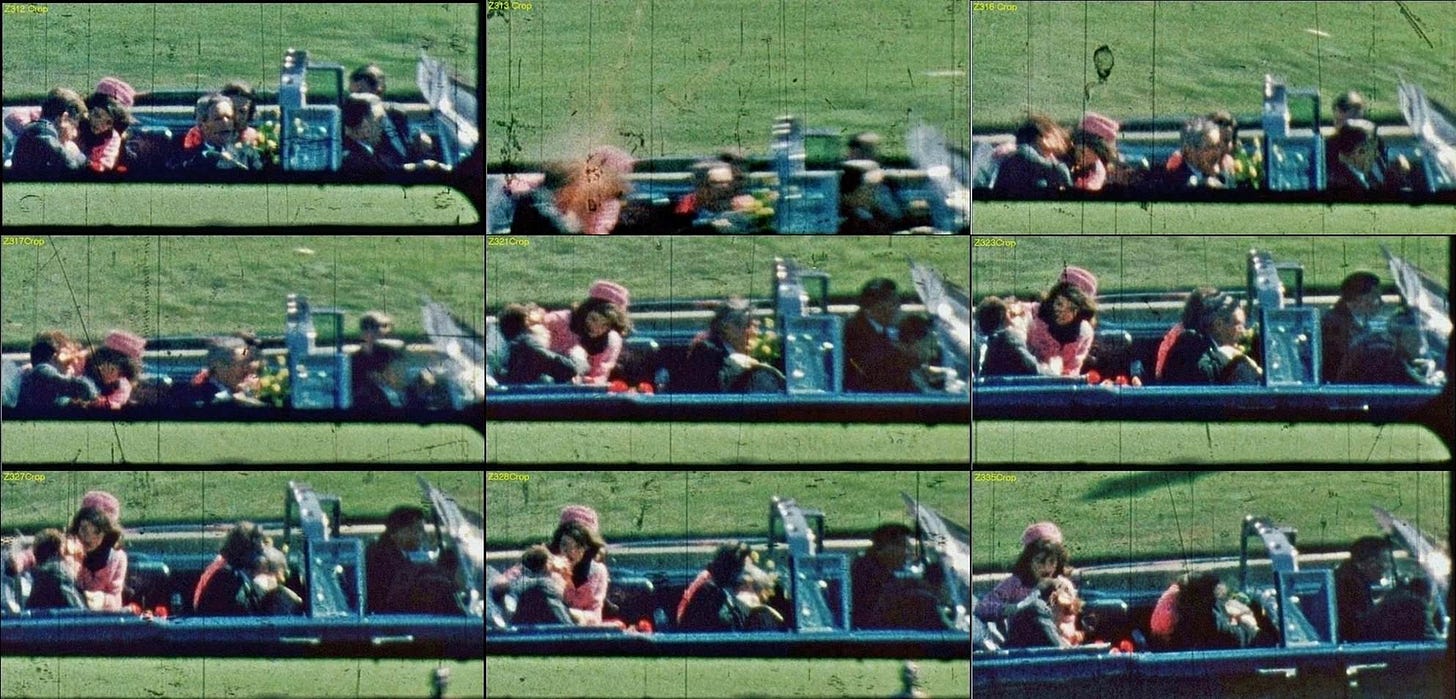

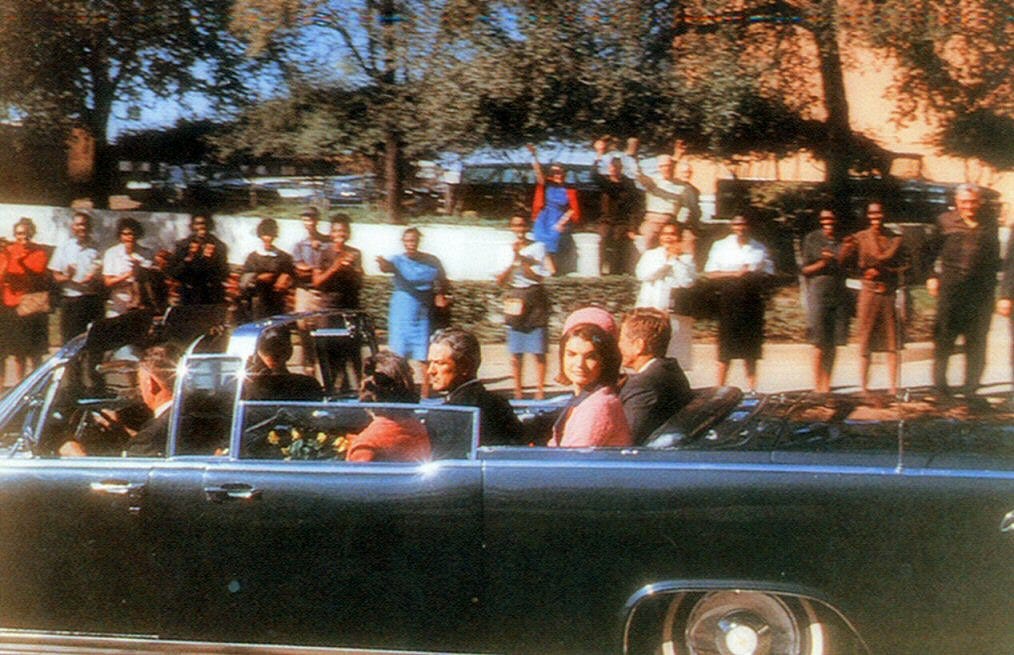
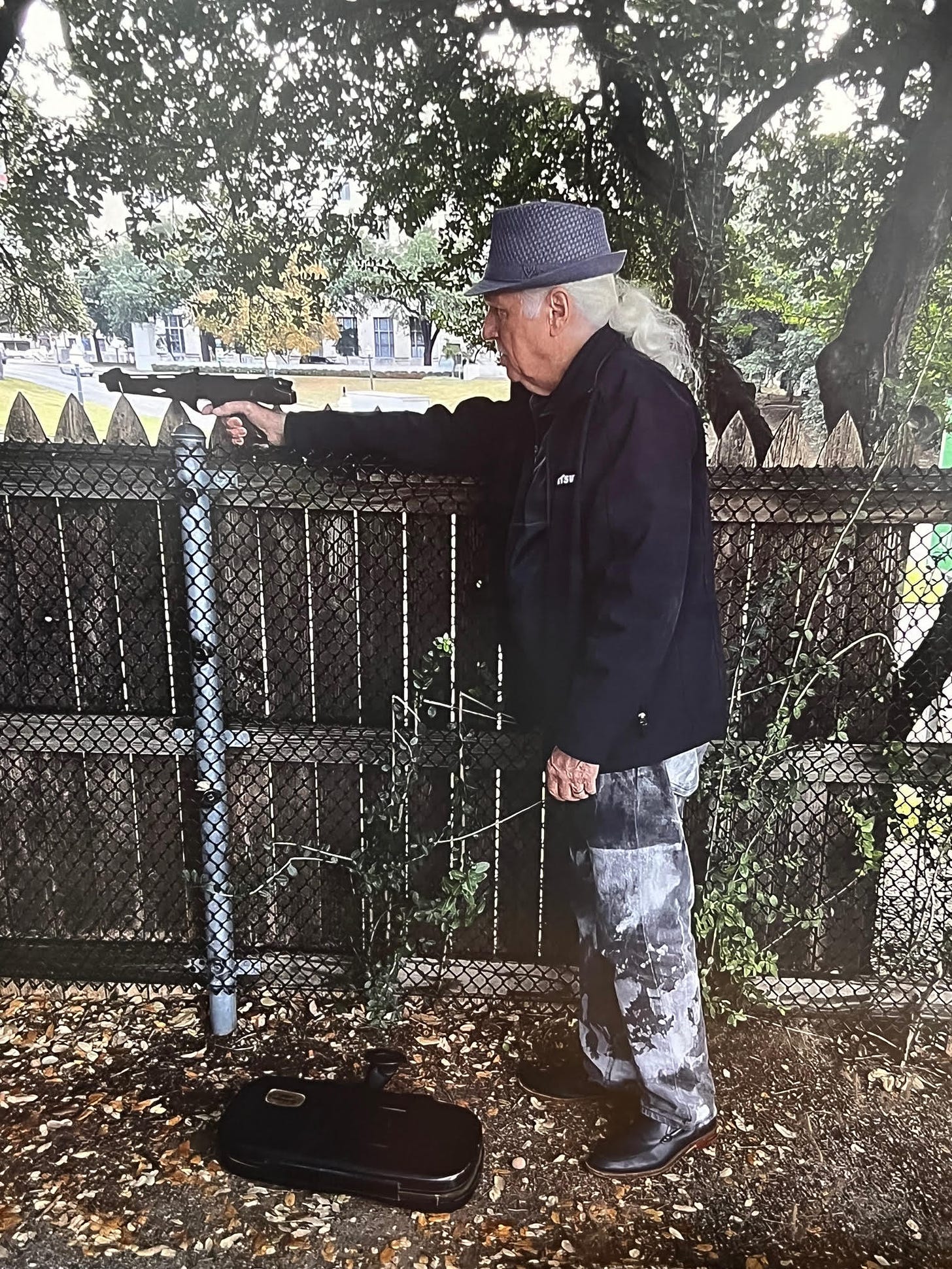
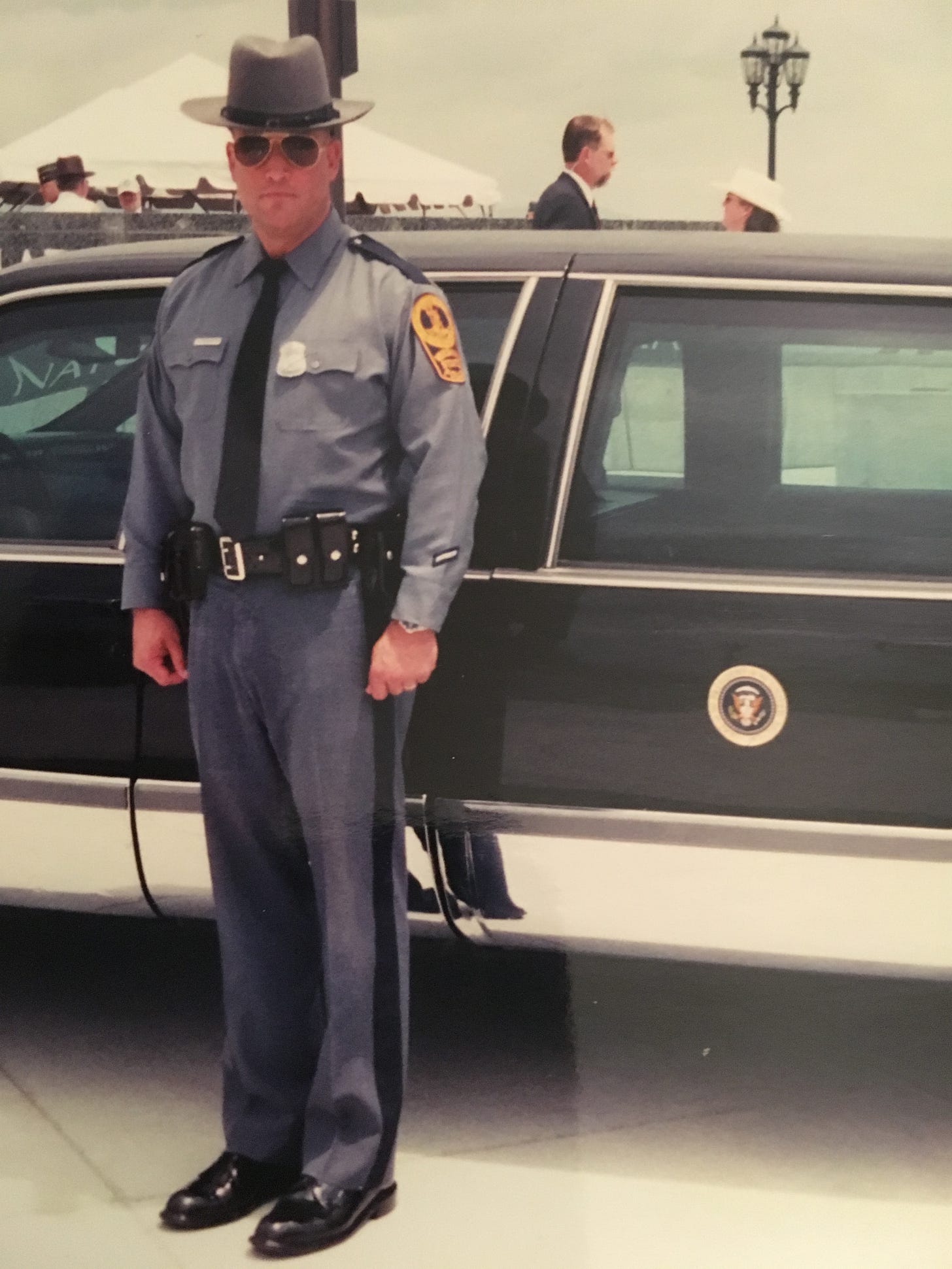
![Lee Harvey Oswald Inside the Soviet Union [INTERVIEW] | History News ... Lee Harvey Oswald Inside the Soviet Union [INTERVIEW] | History News ...](https://substackcdn.com/image/fetch/w_1456,c_limit,f_auto,q_auto:good,fl_progressive:steep/https%3A%2F%2Fsubstack-post-media.s3.amazonaws.com%2Fpublic%2Fimages%2F9a960439-0fc0-402f-953a-9f2686e22452_600x400.jpeg)
